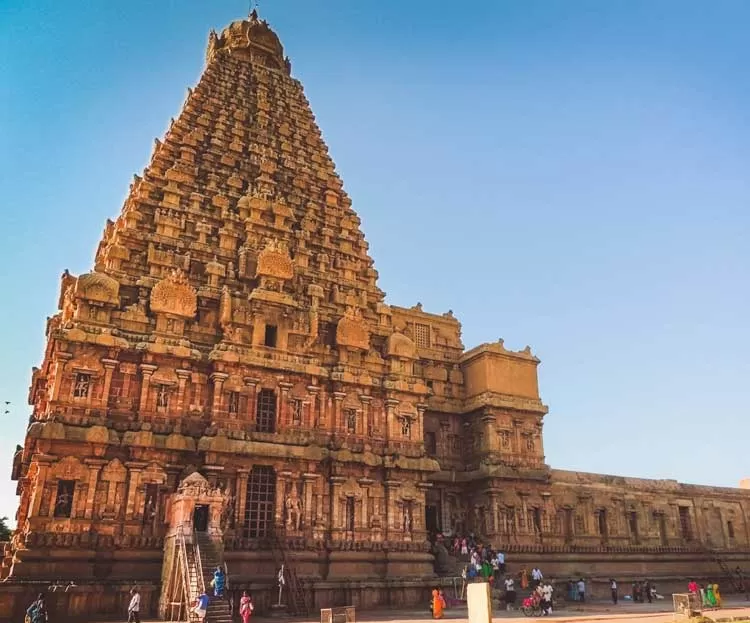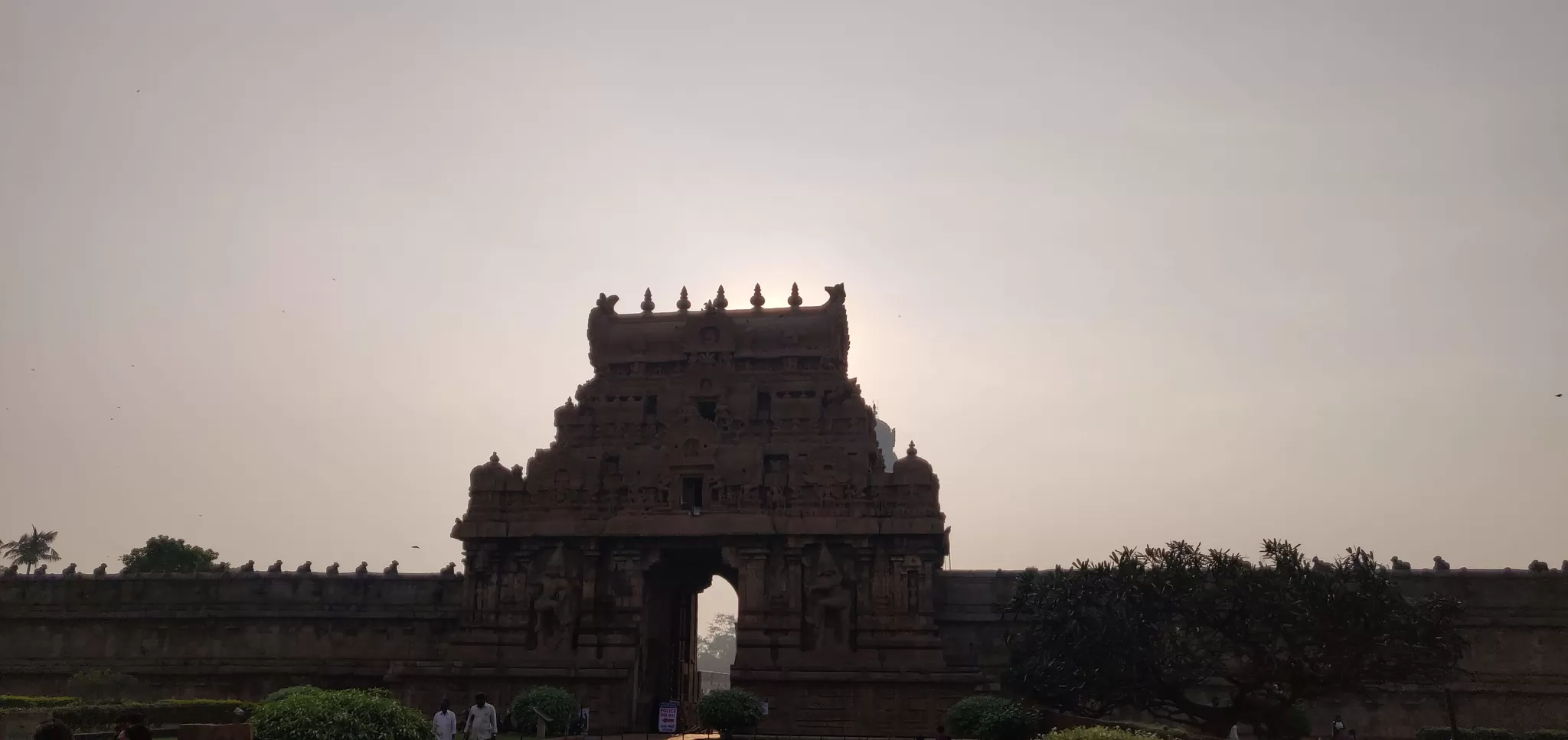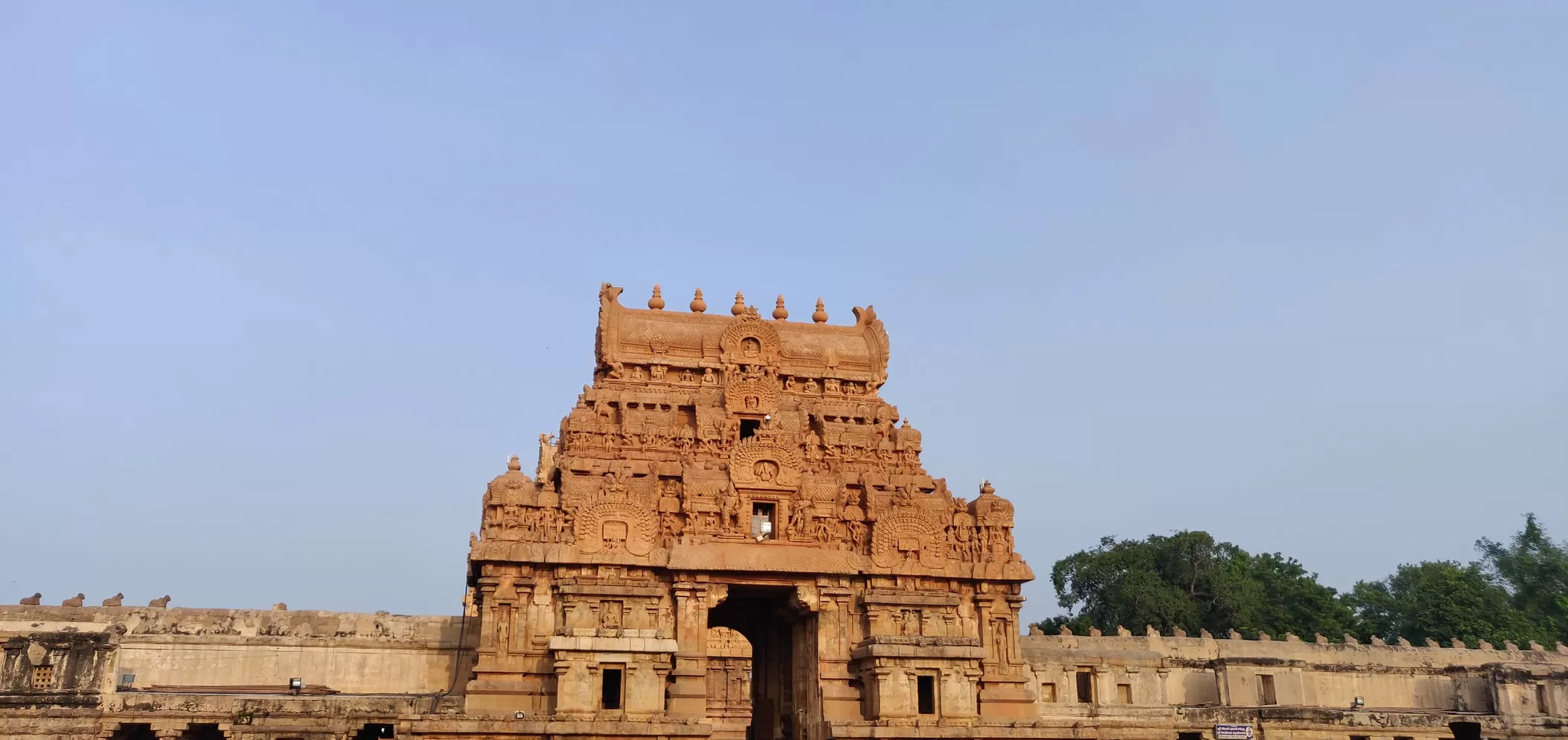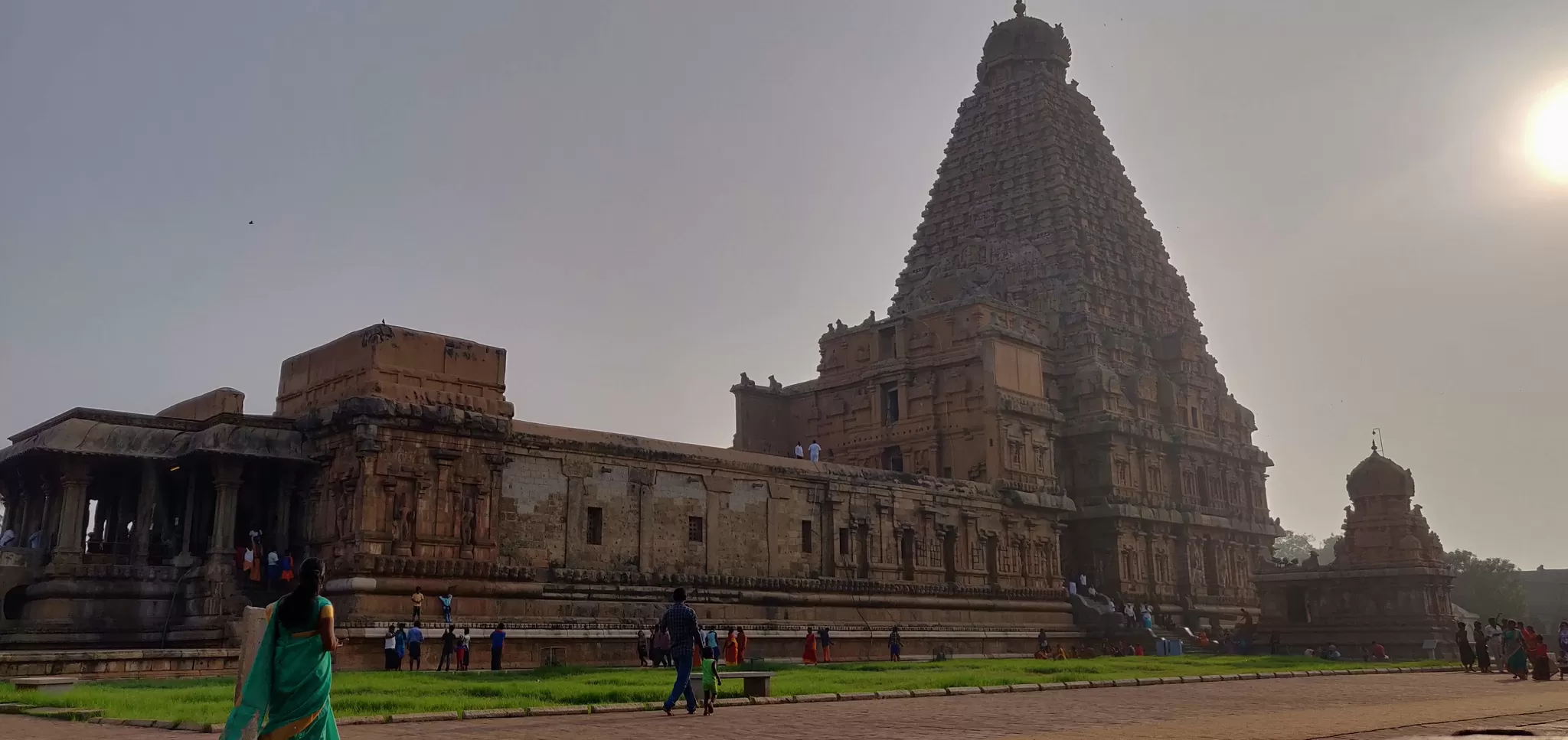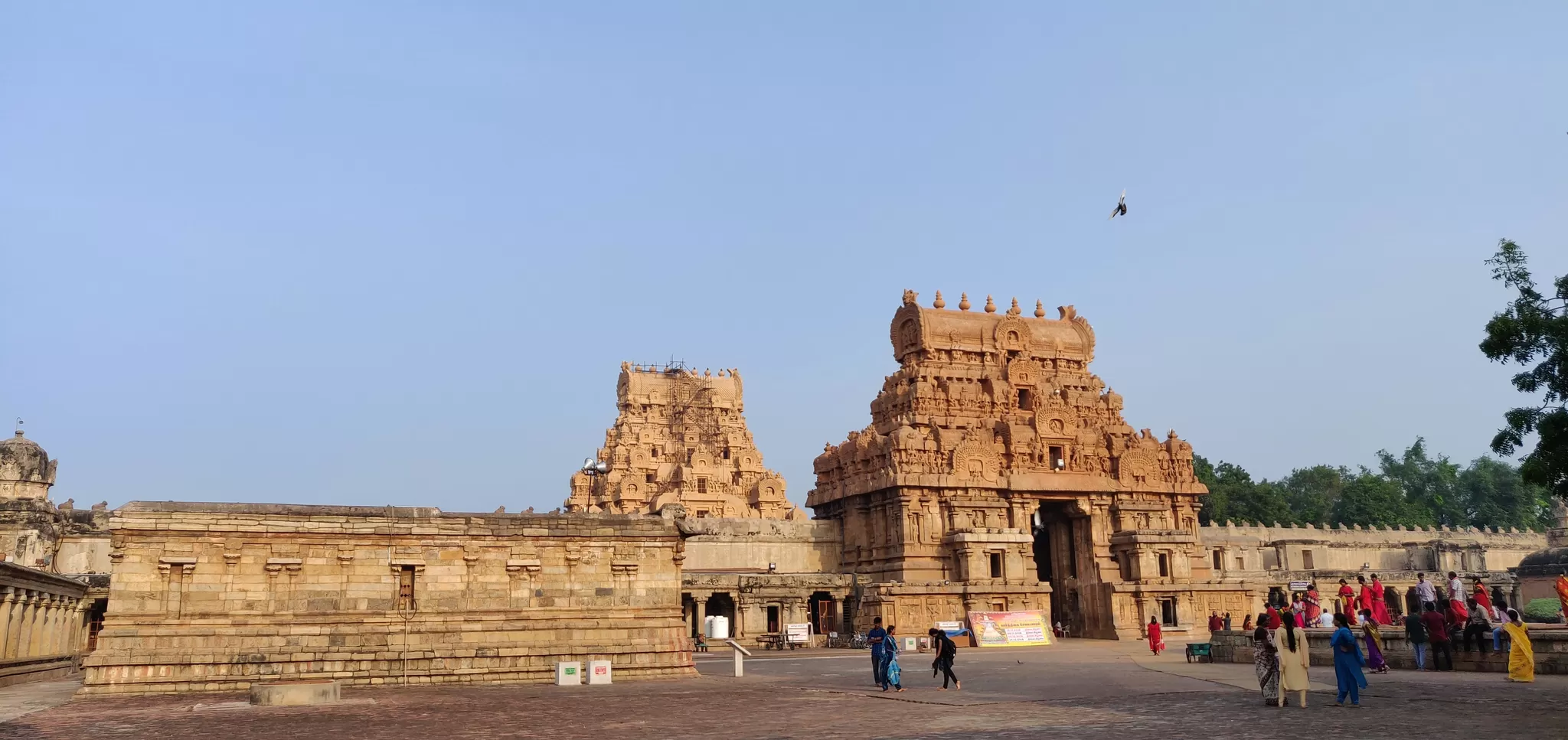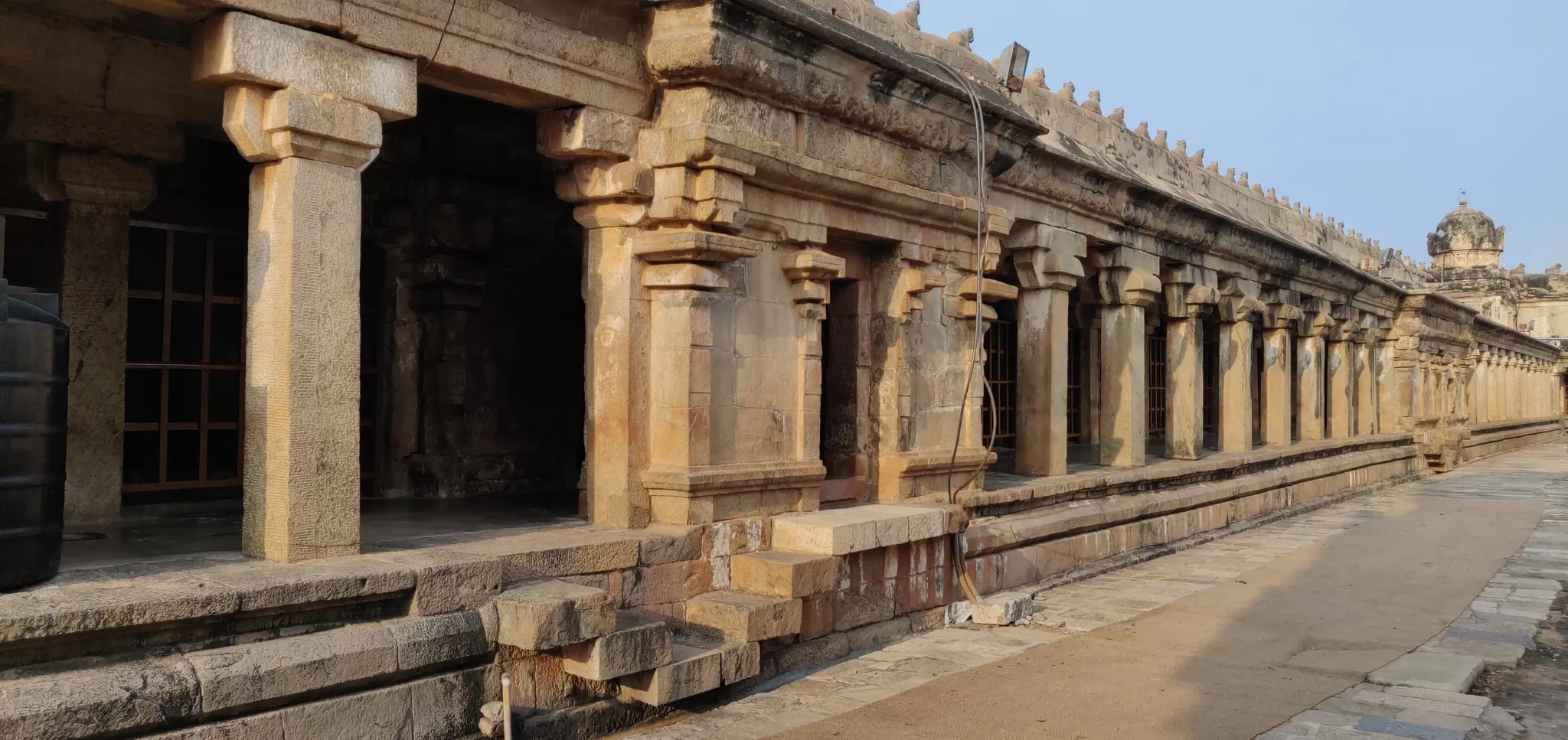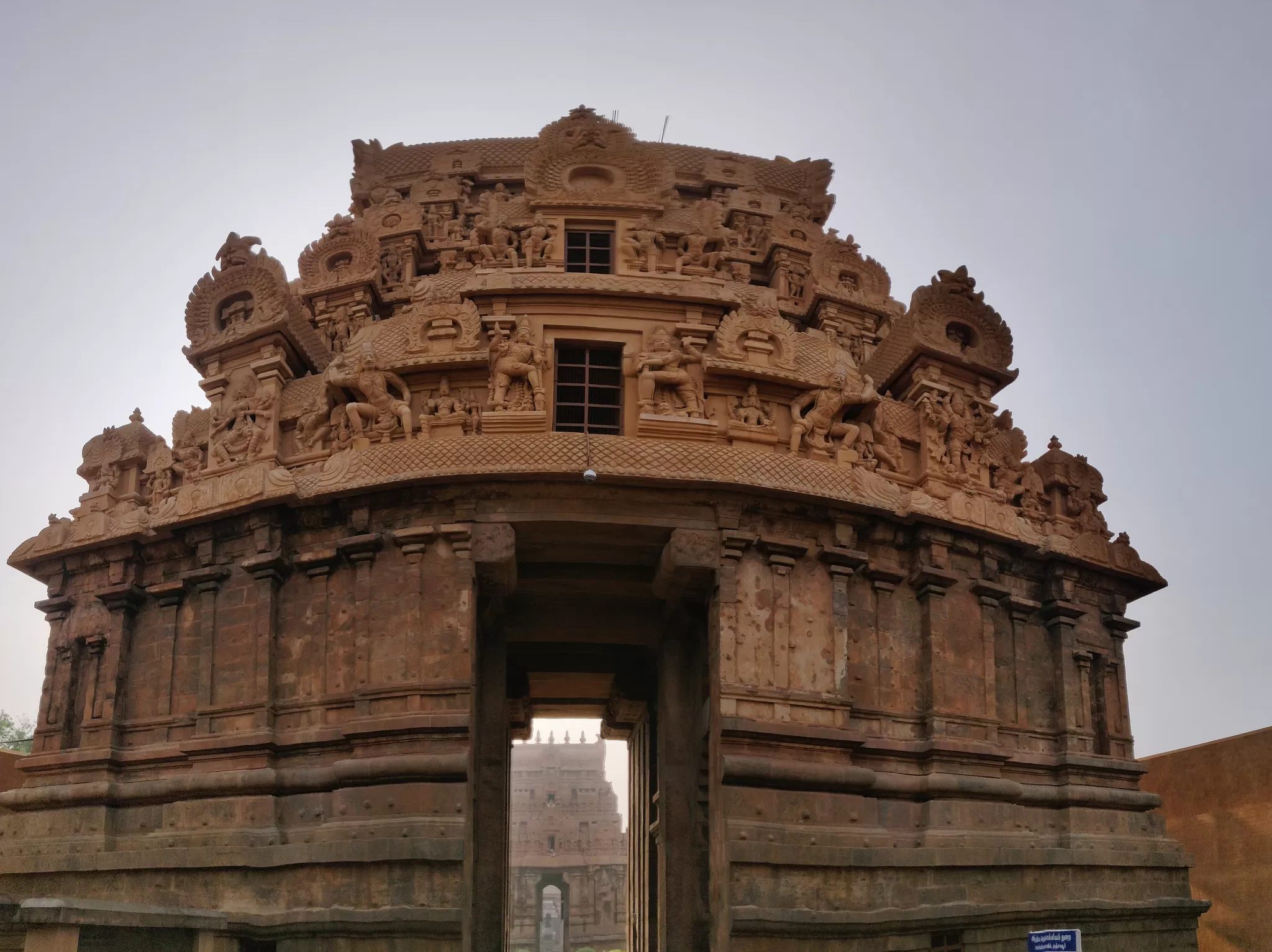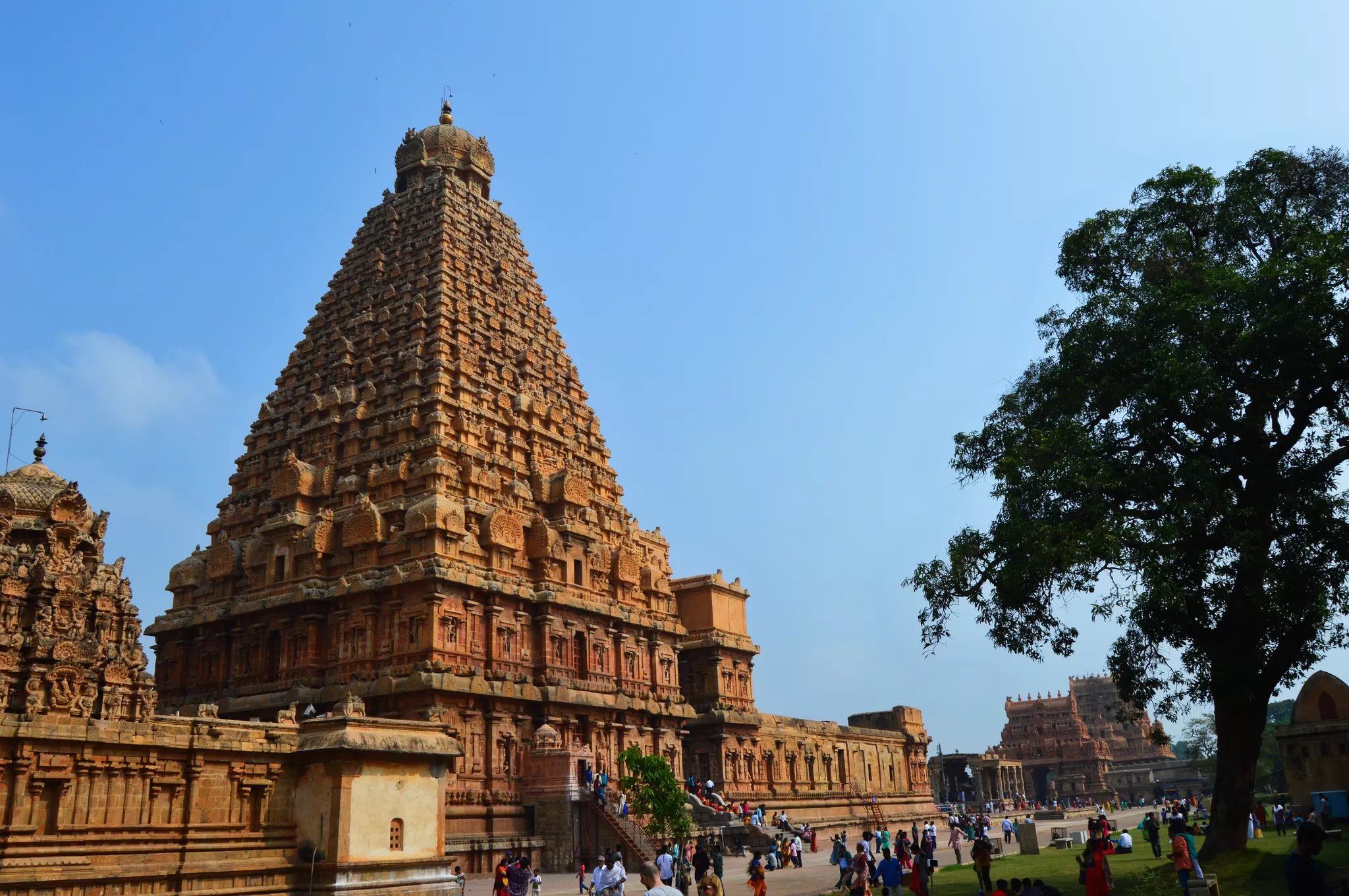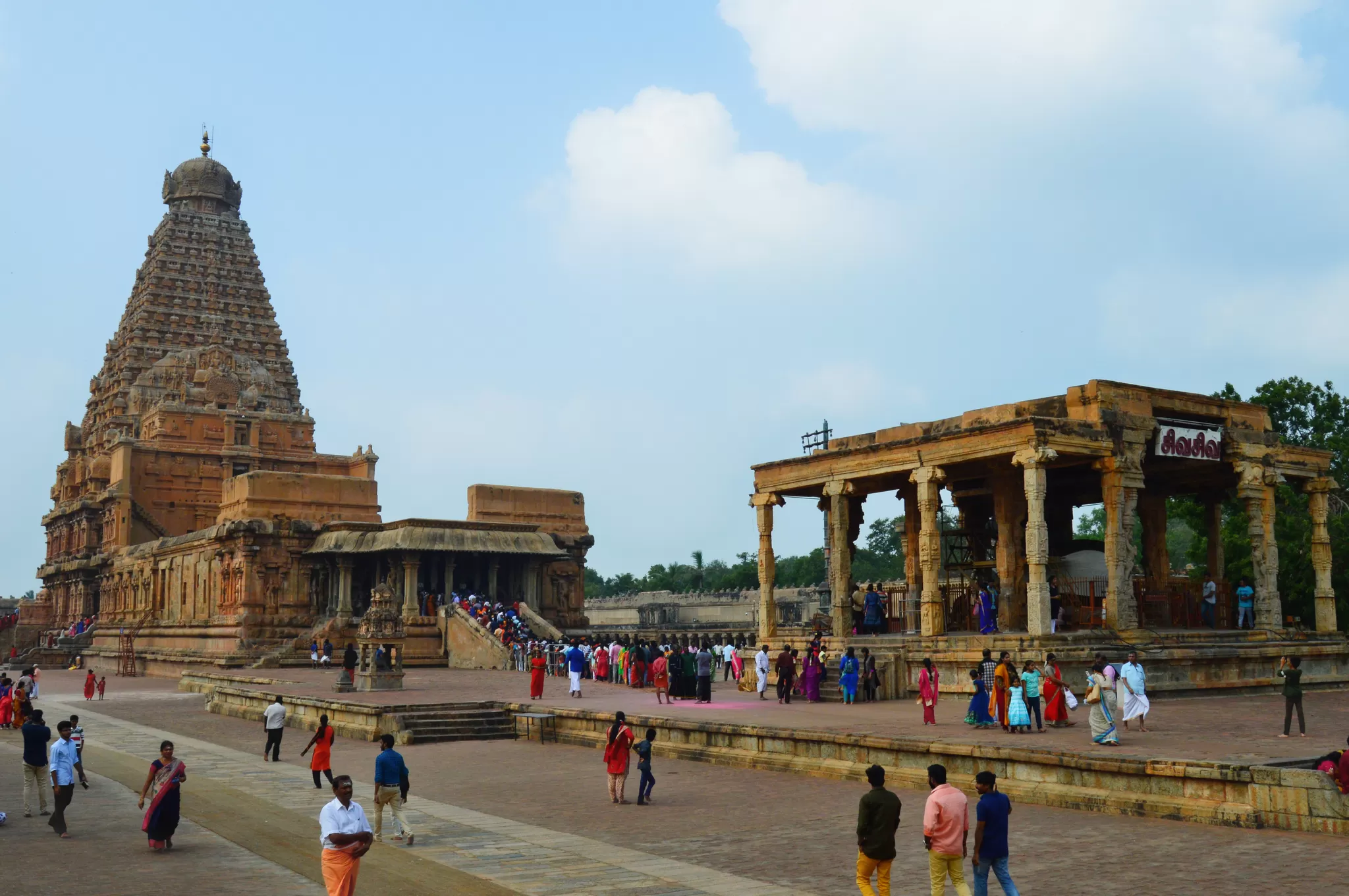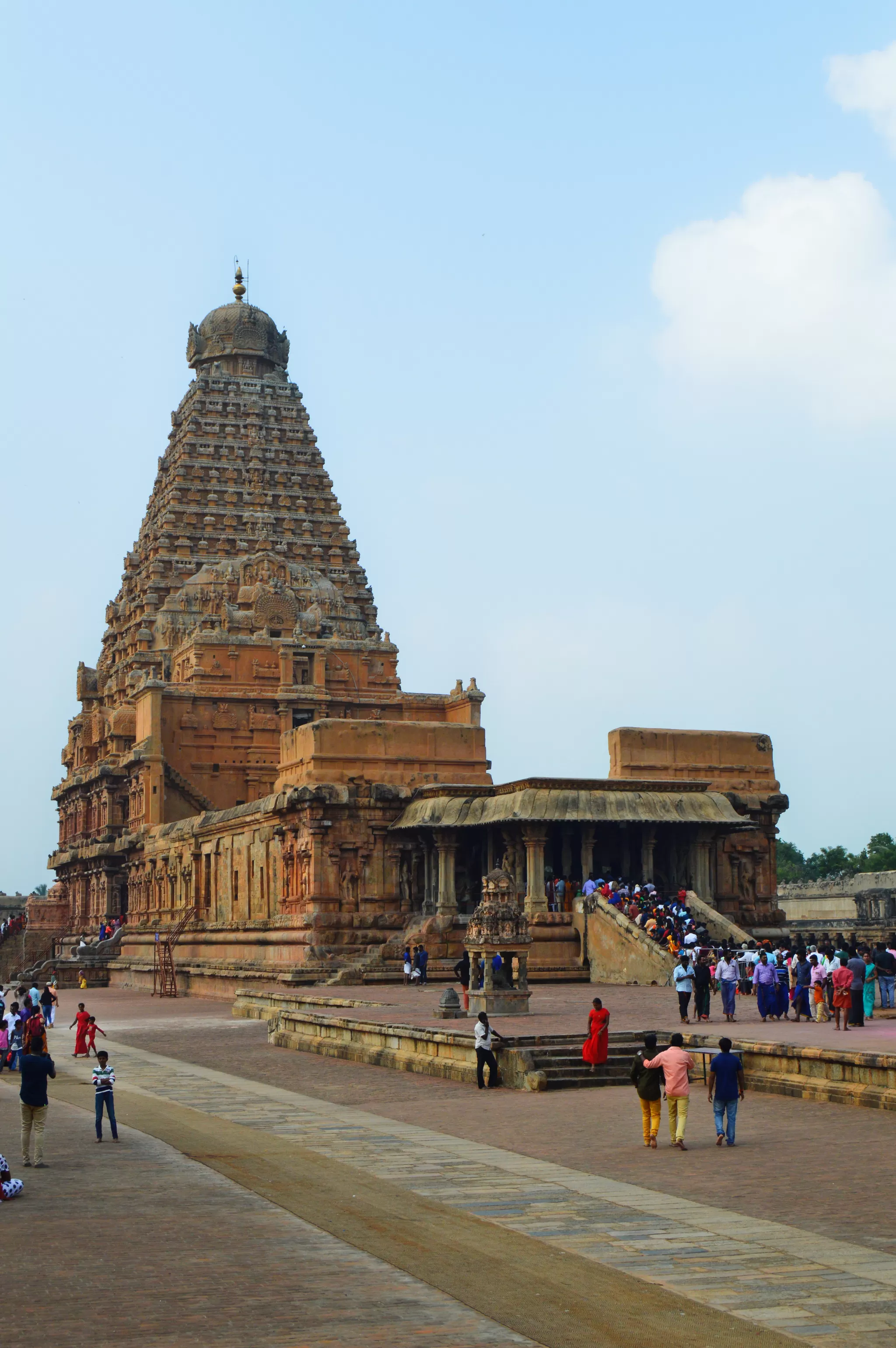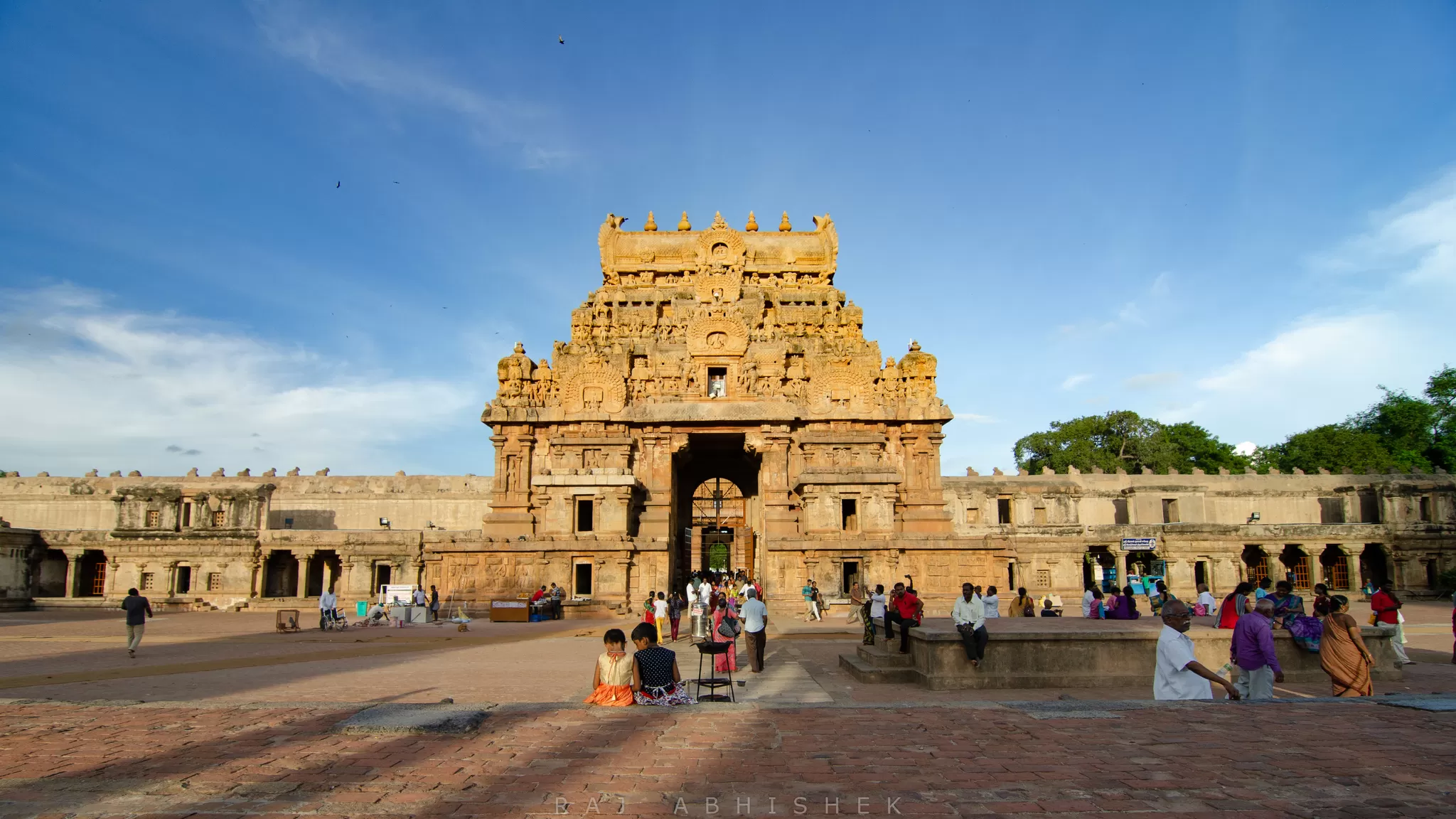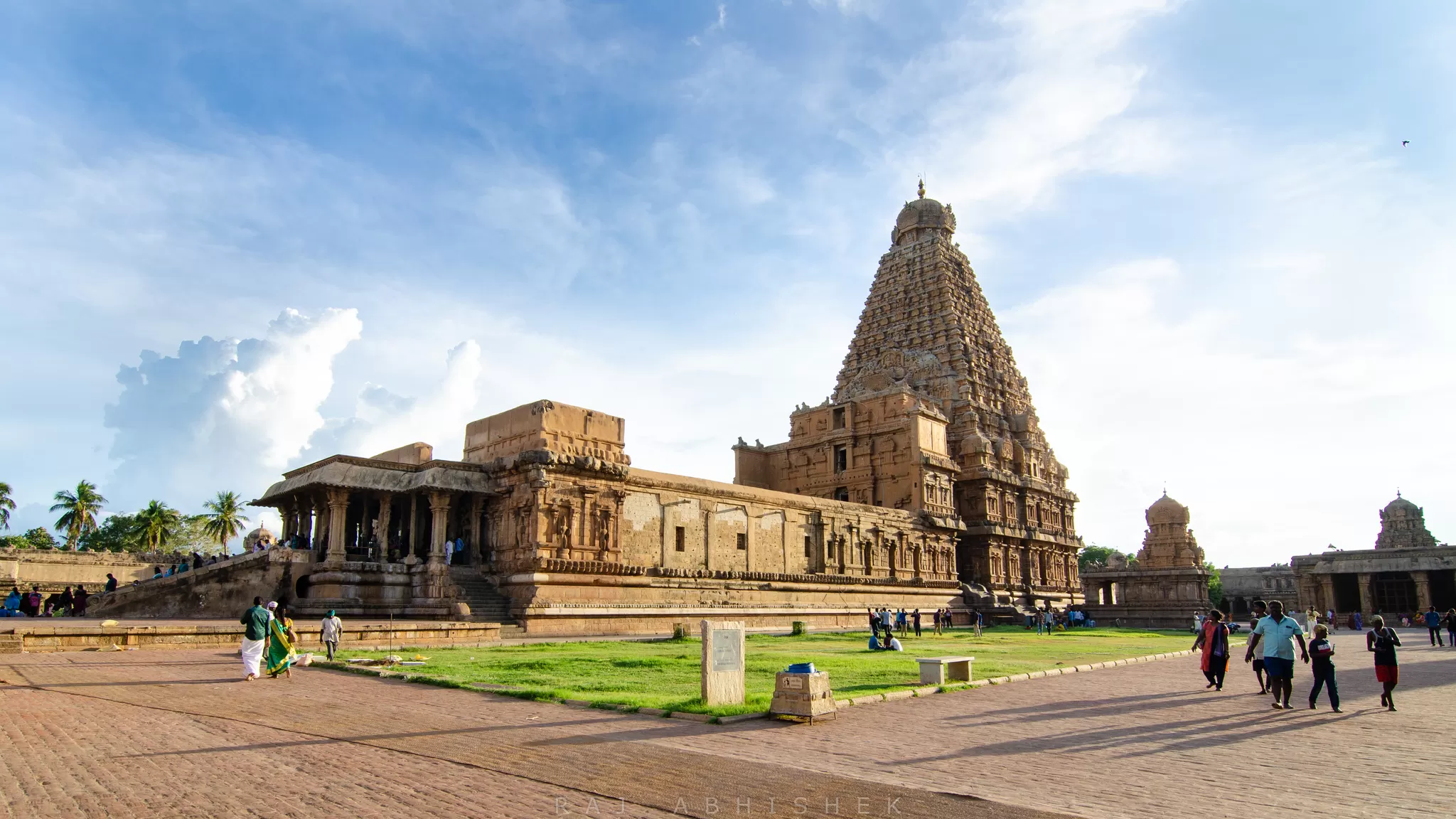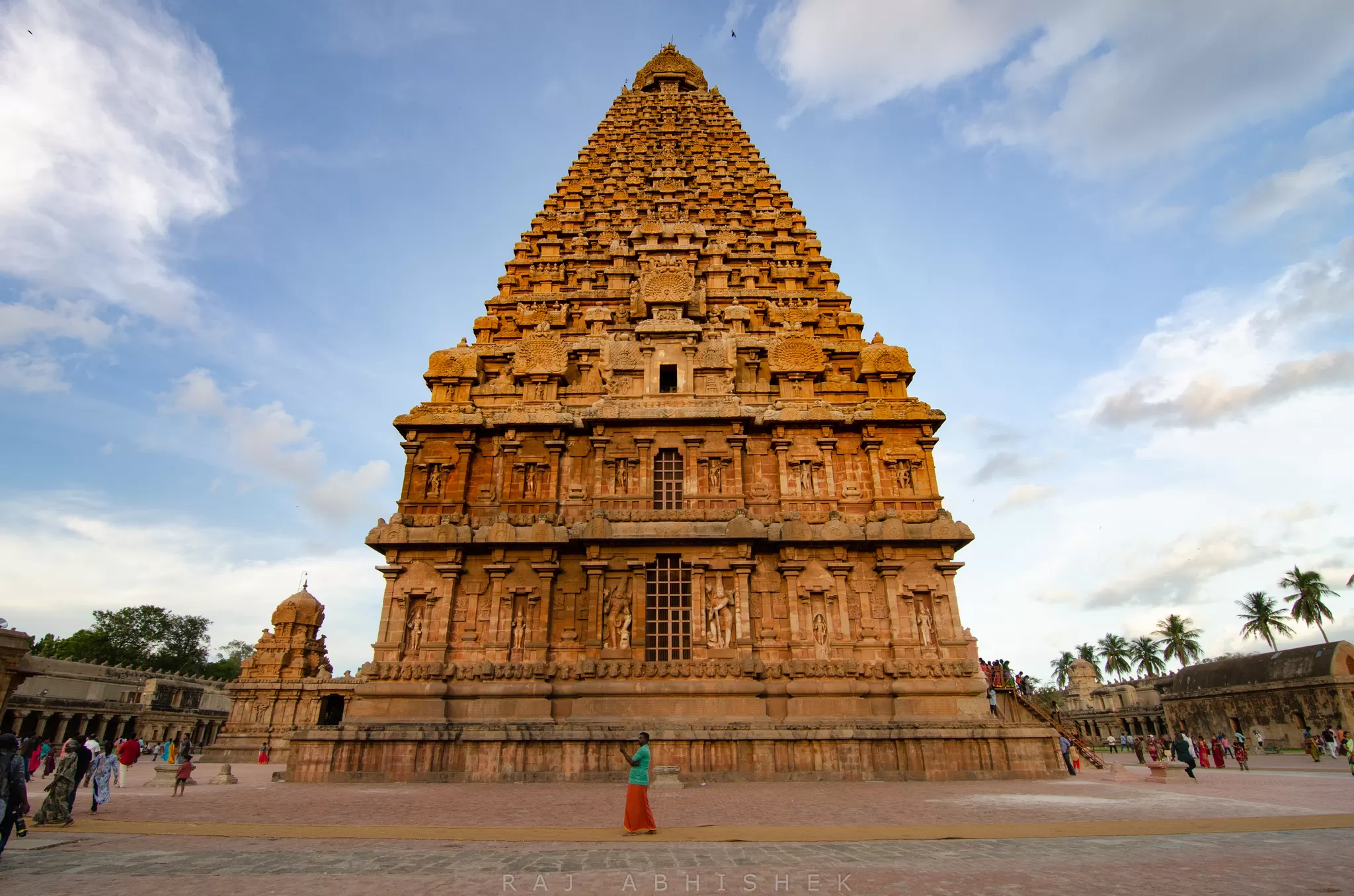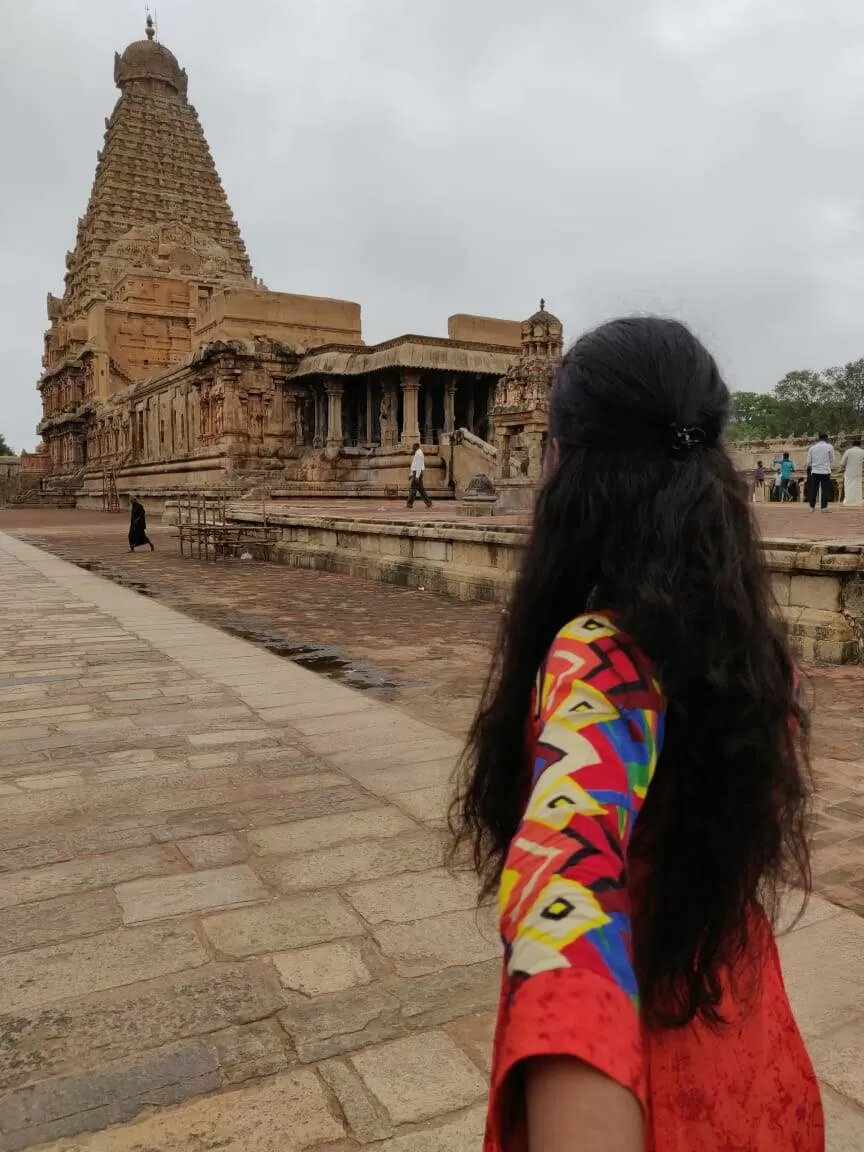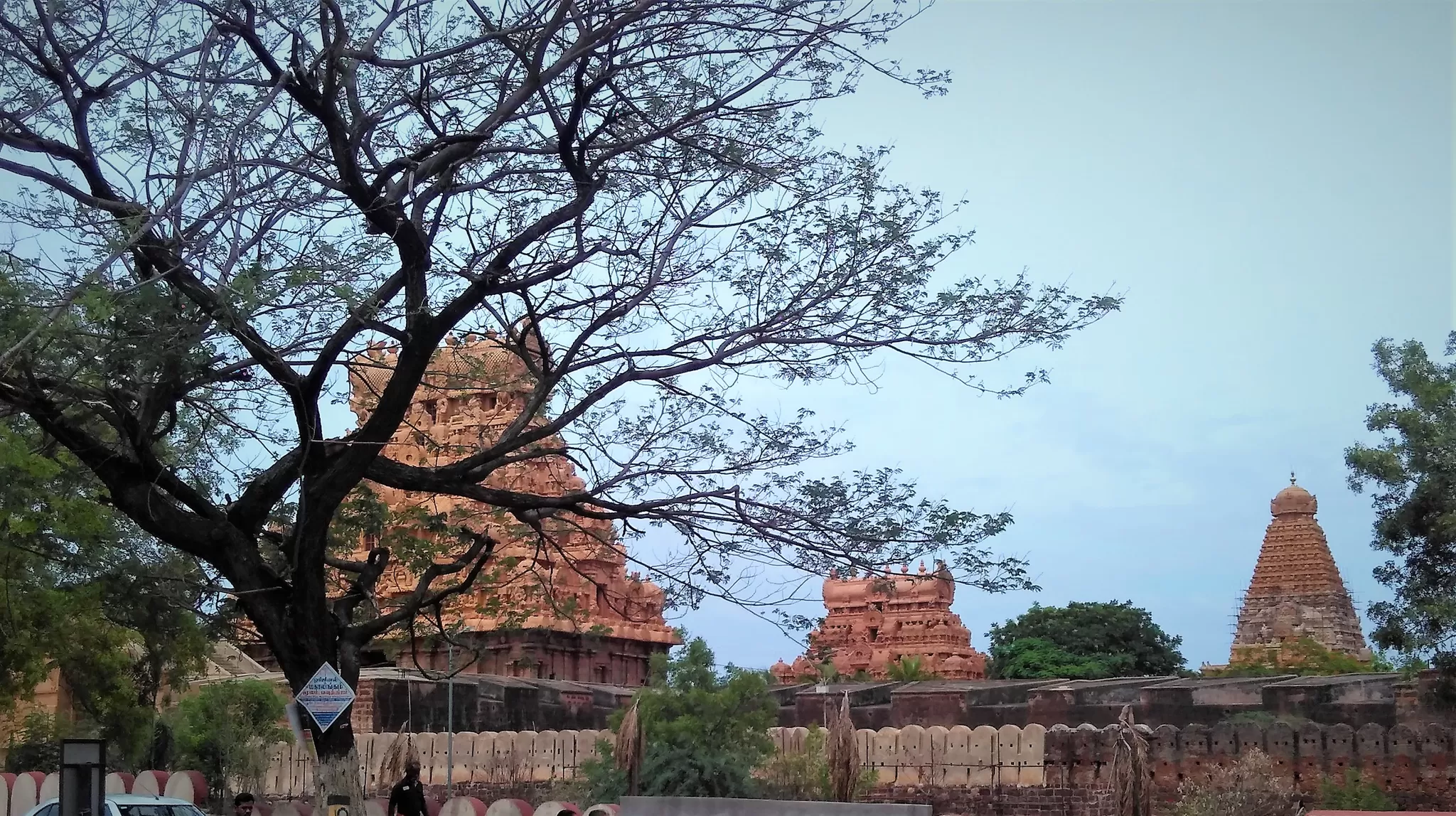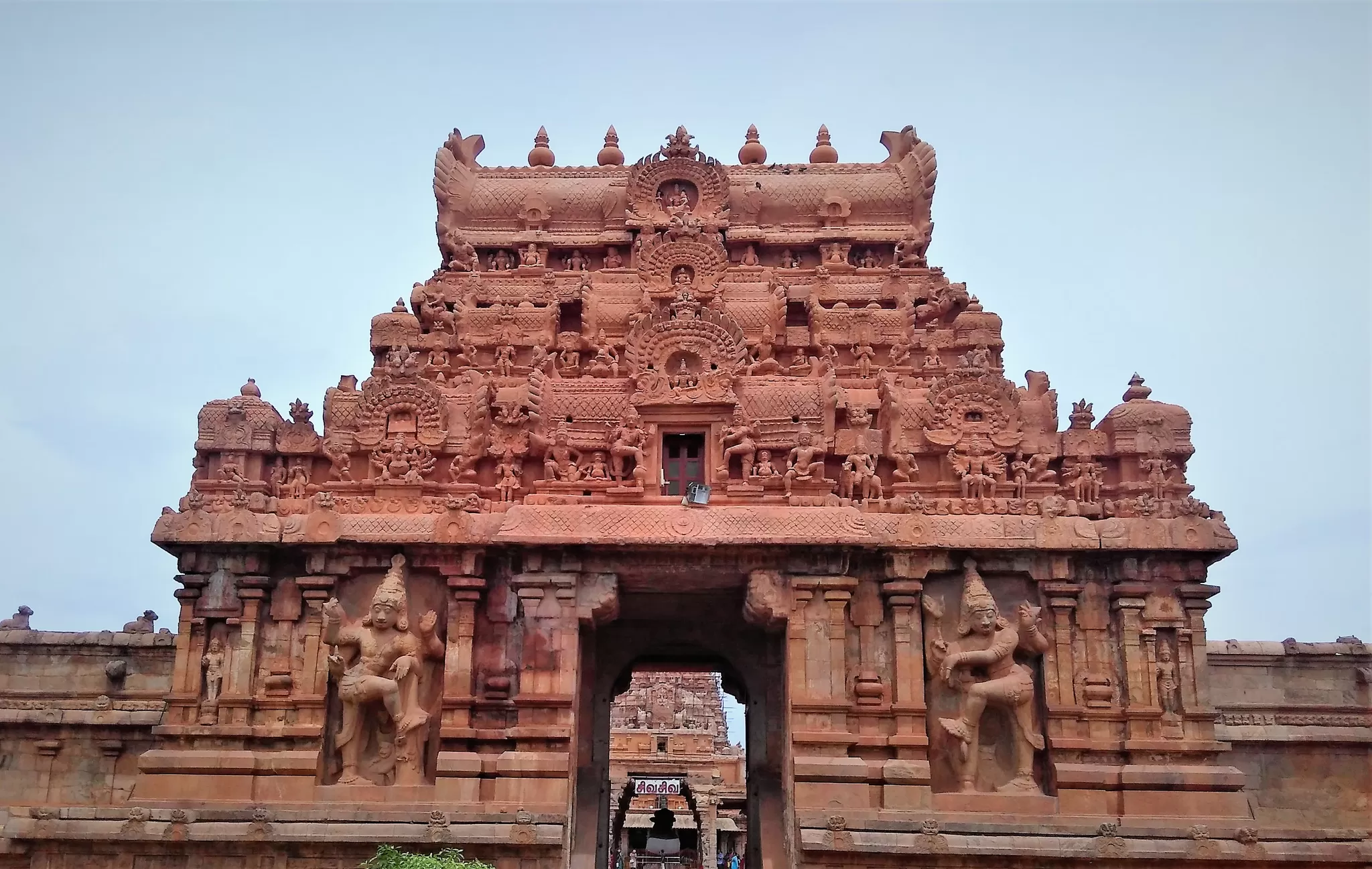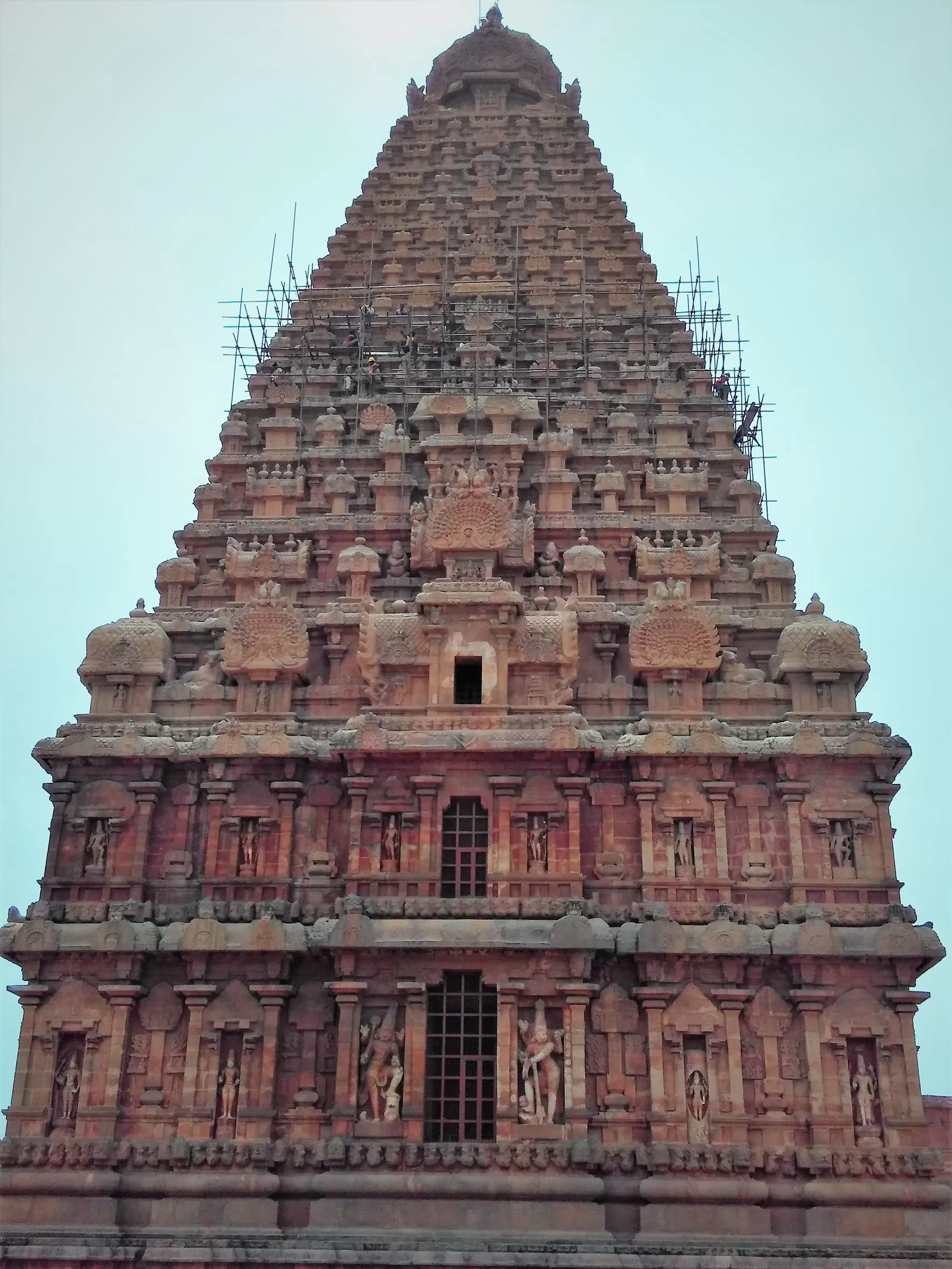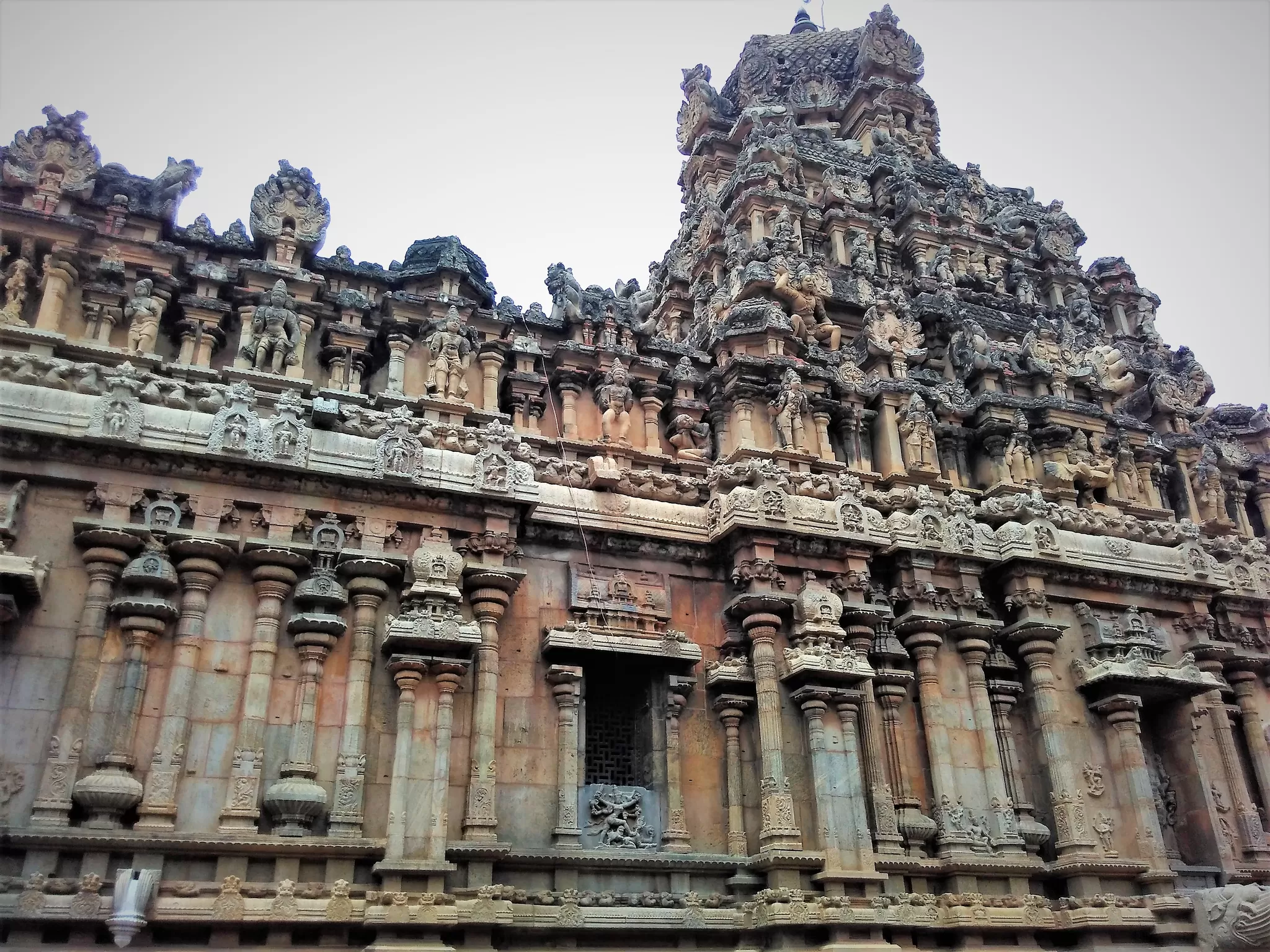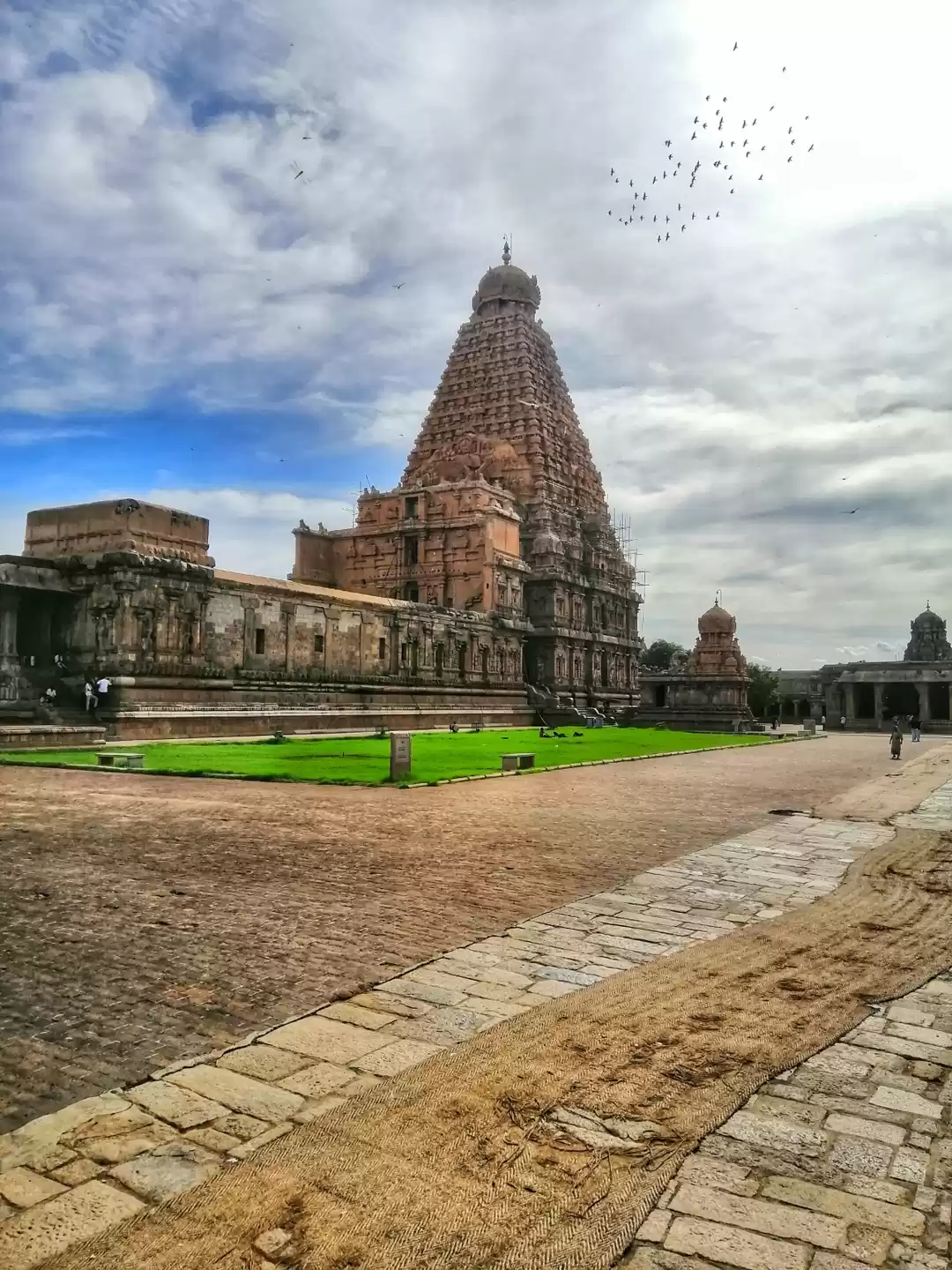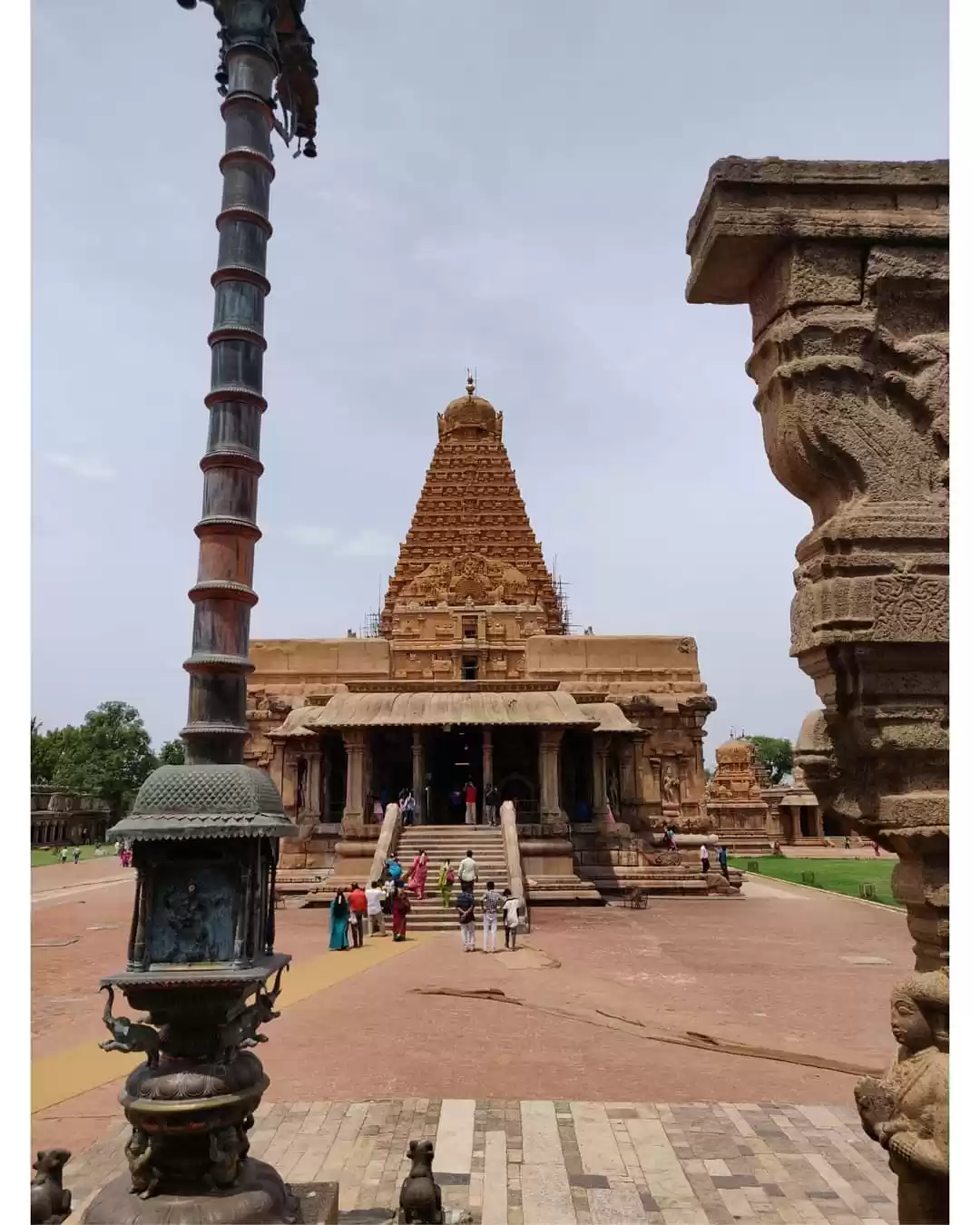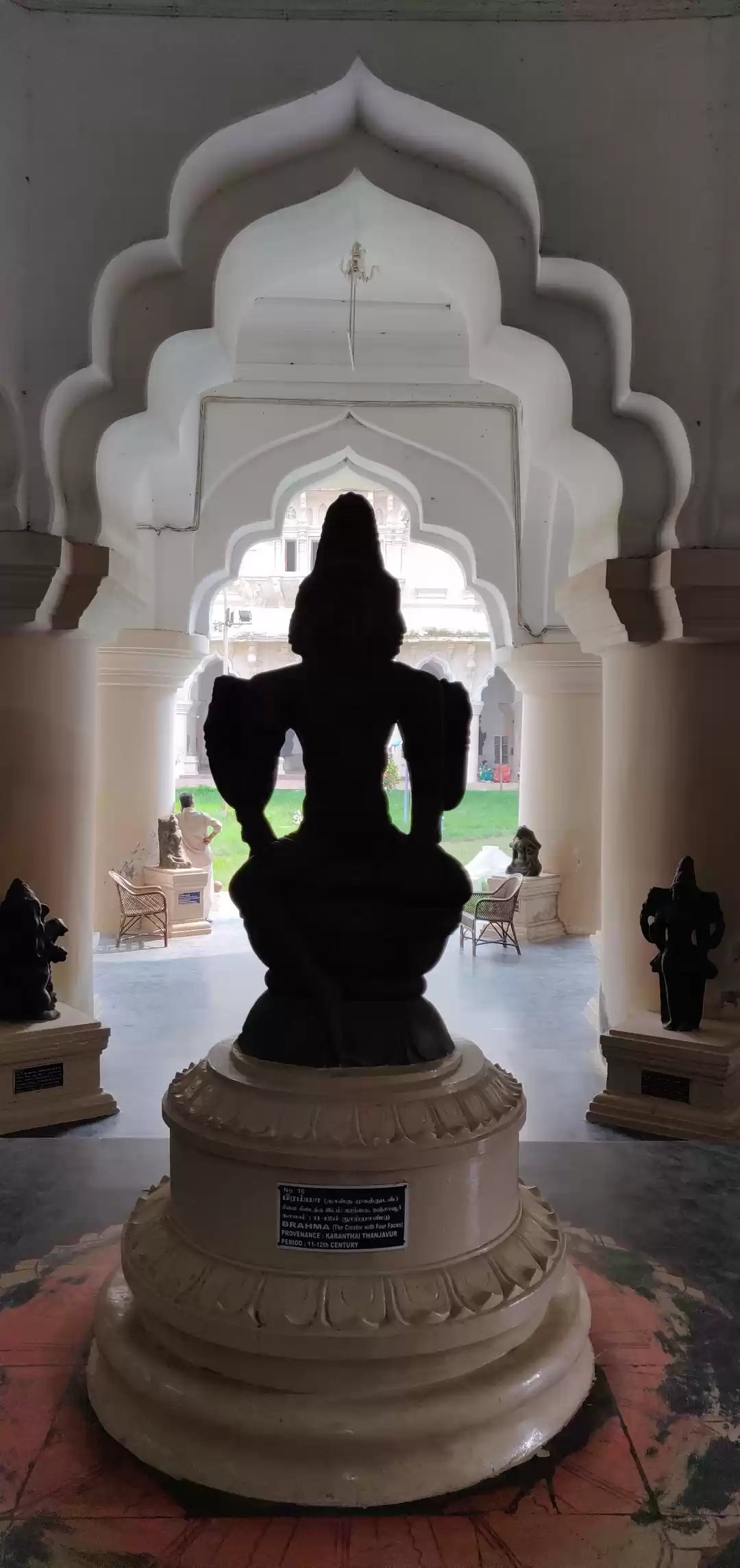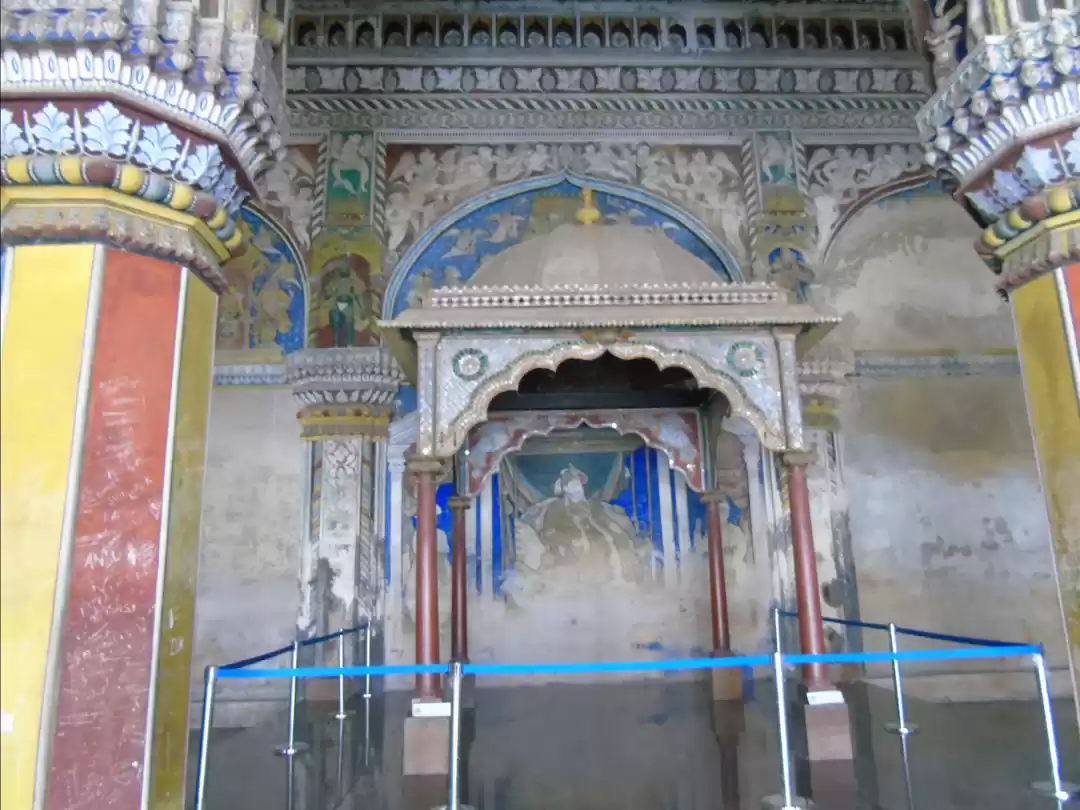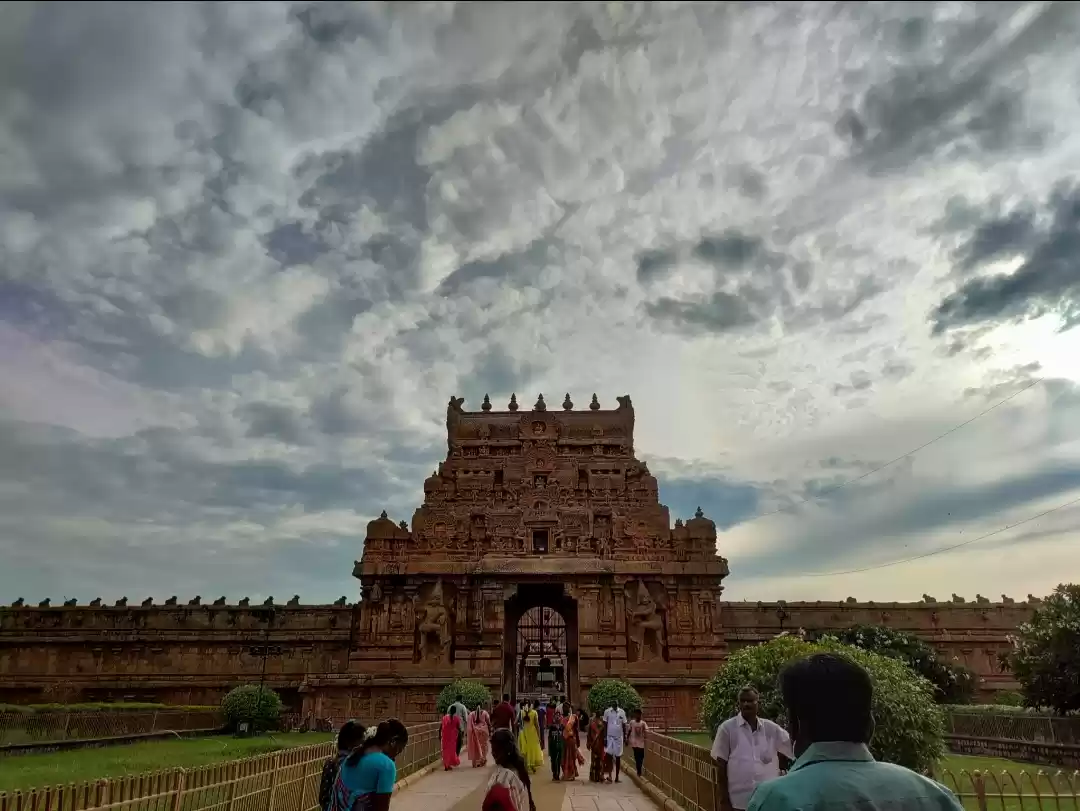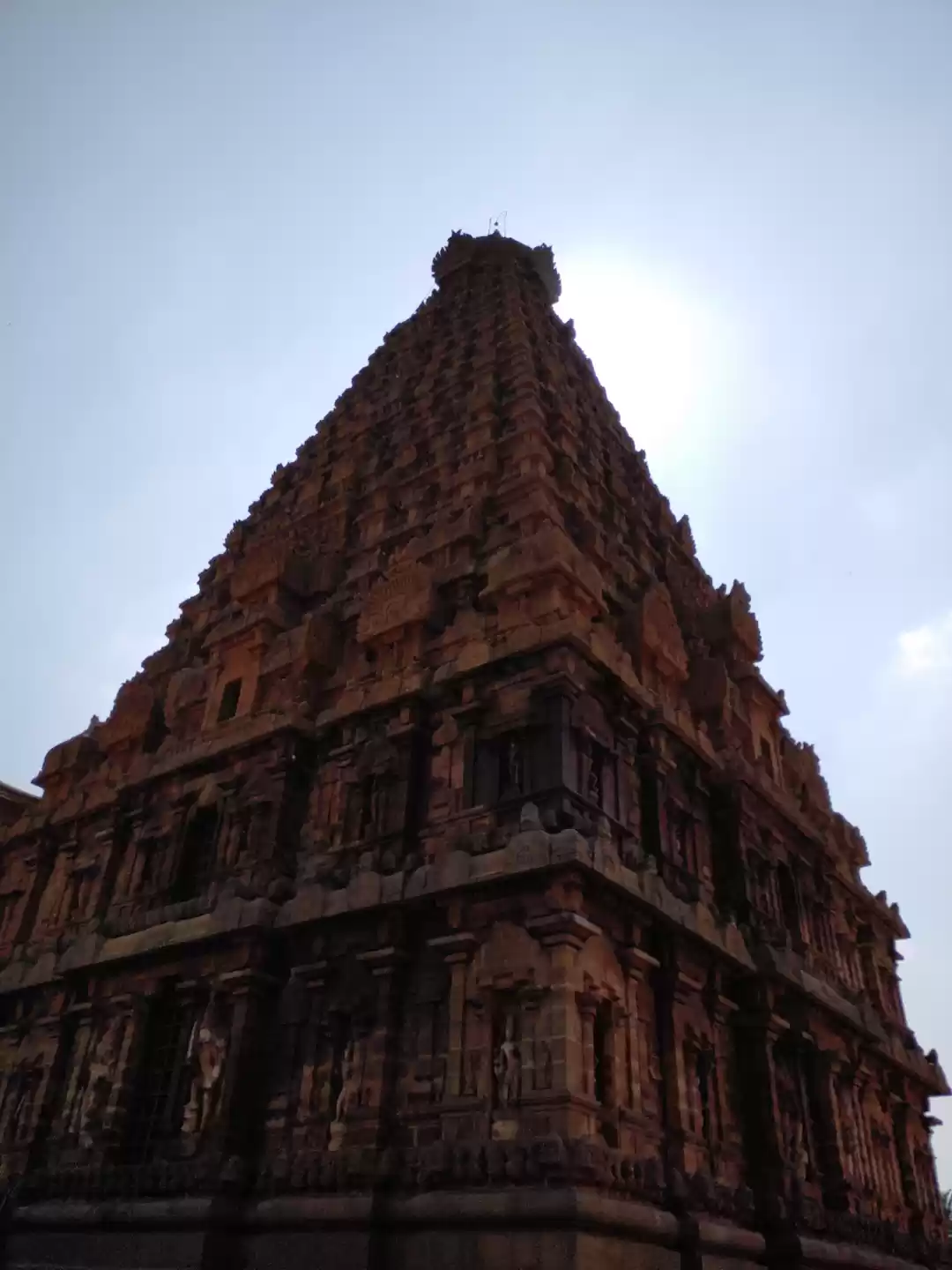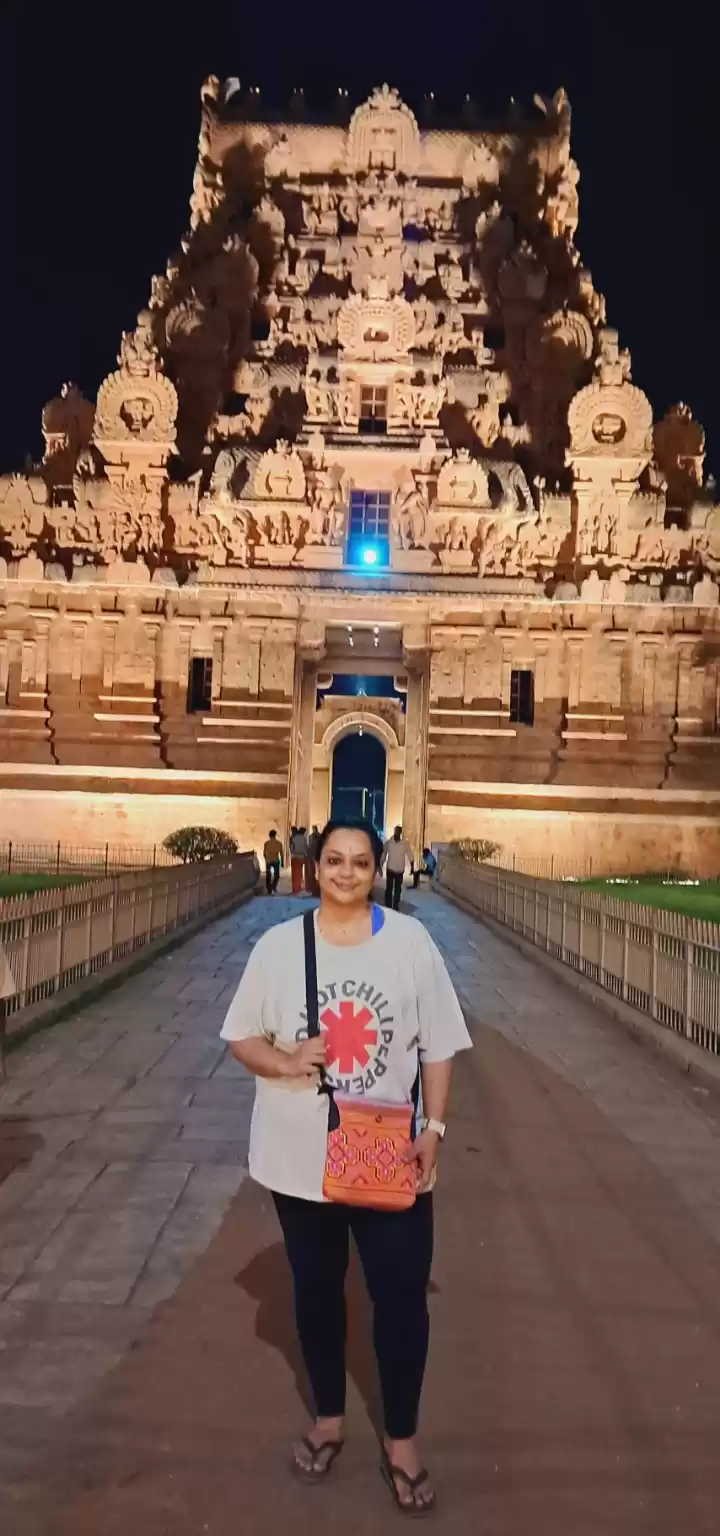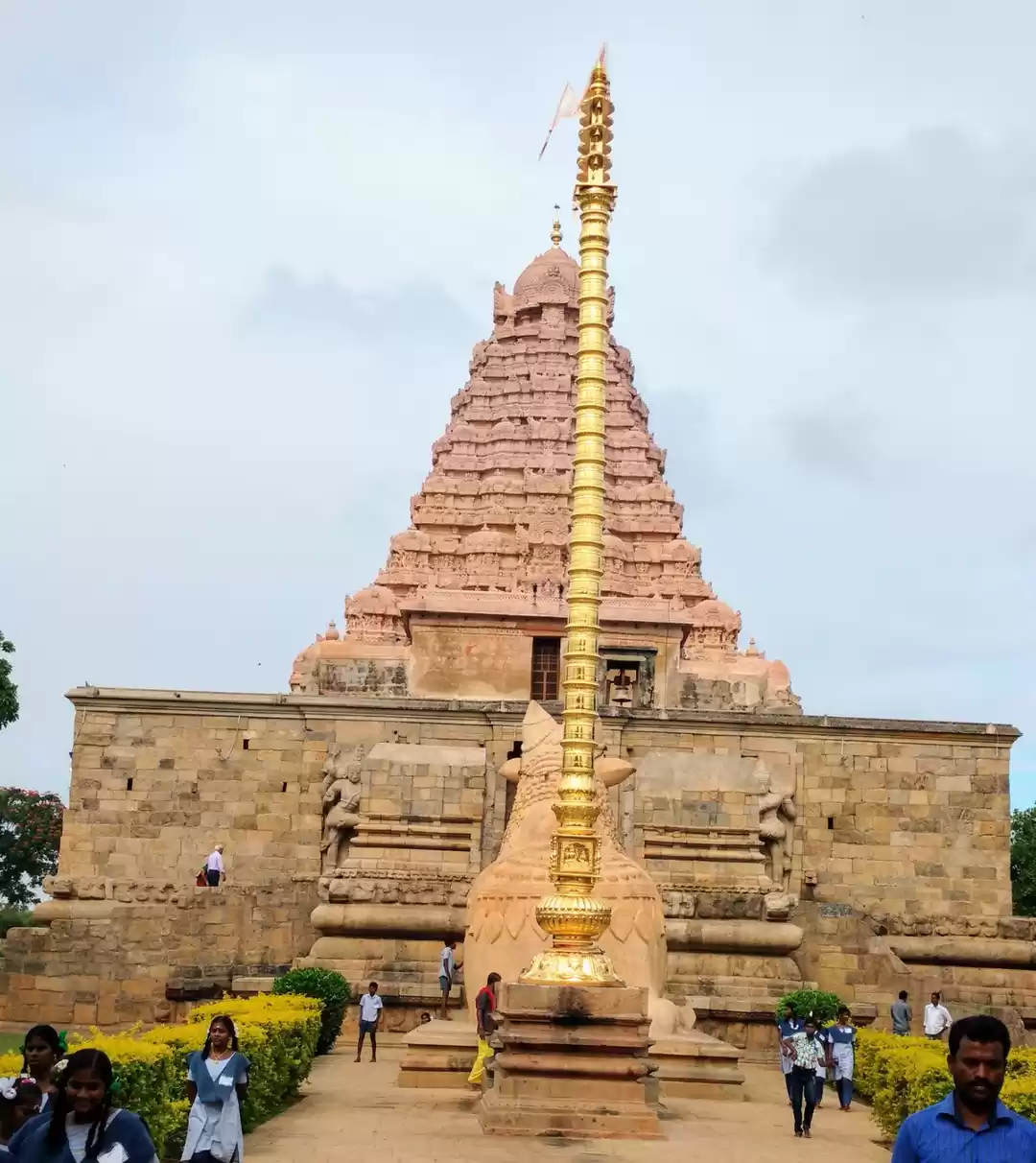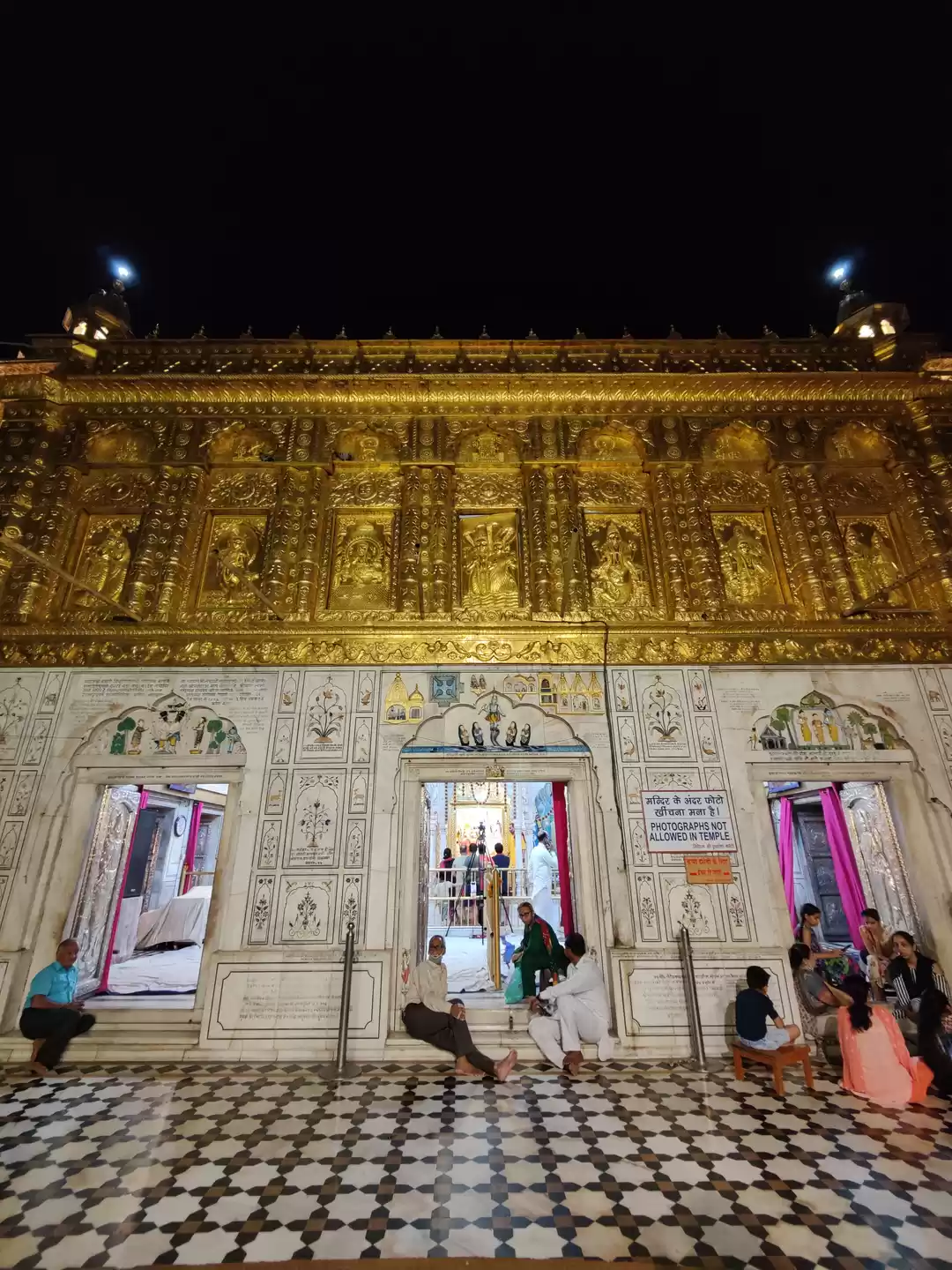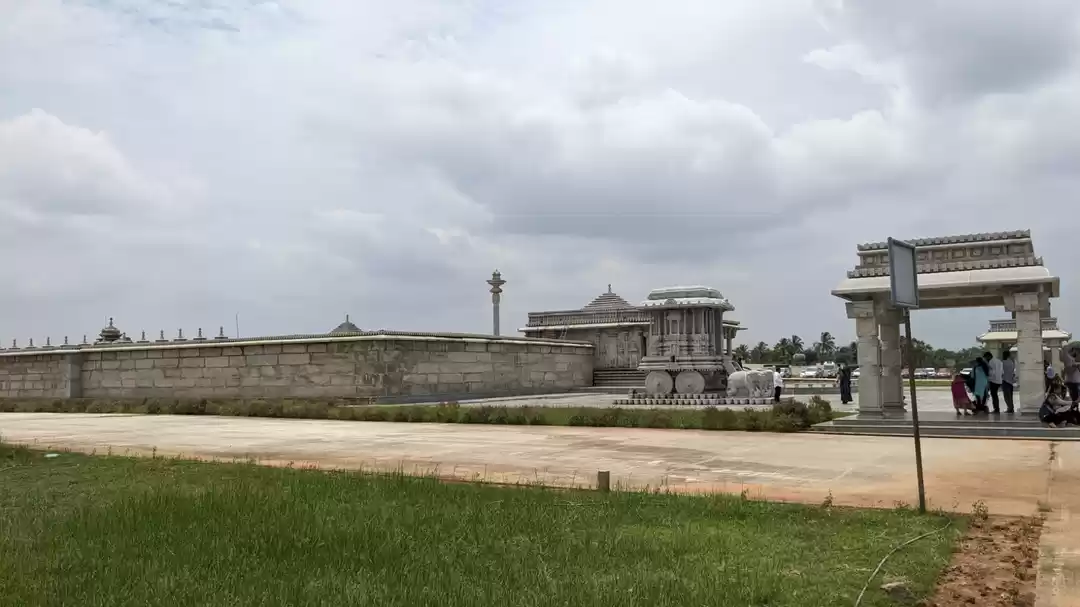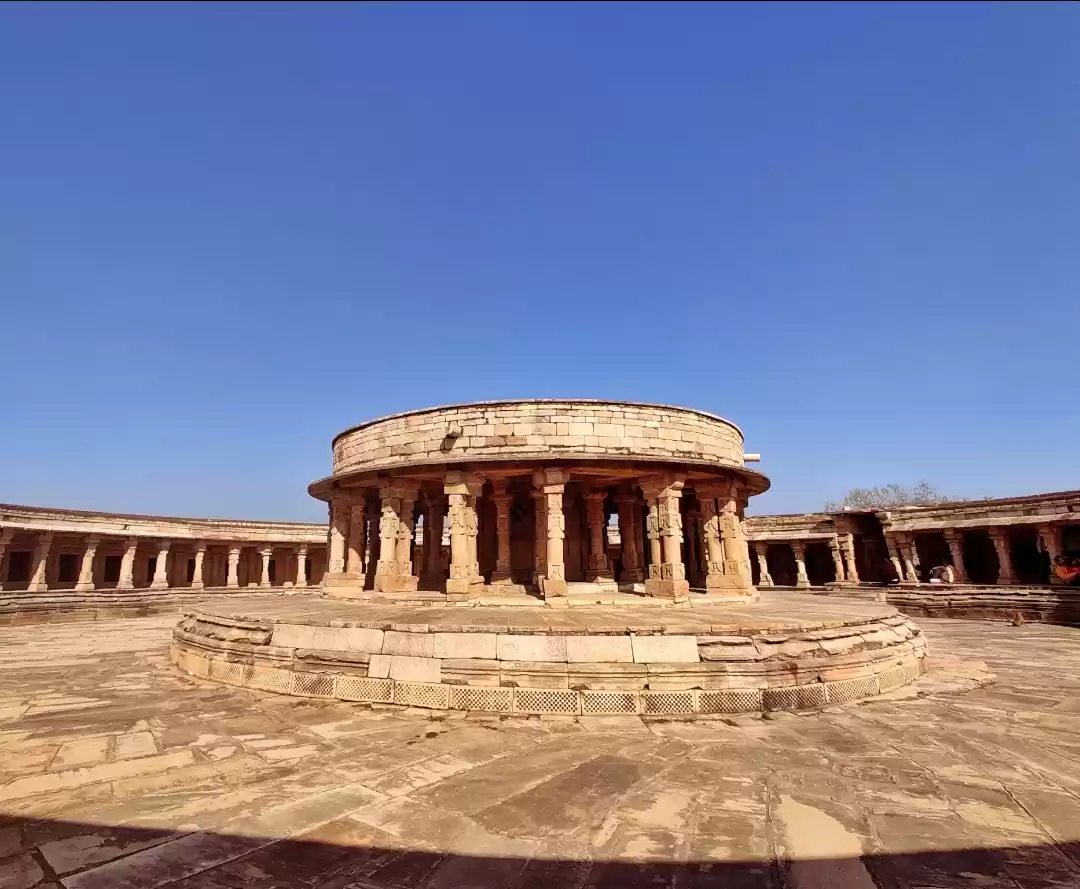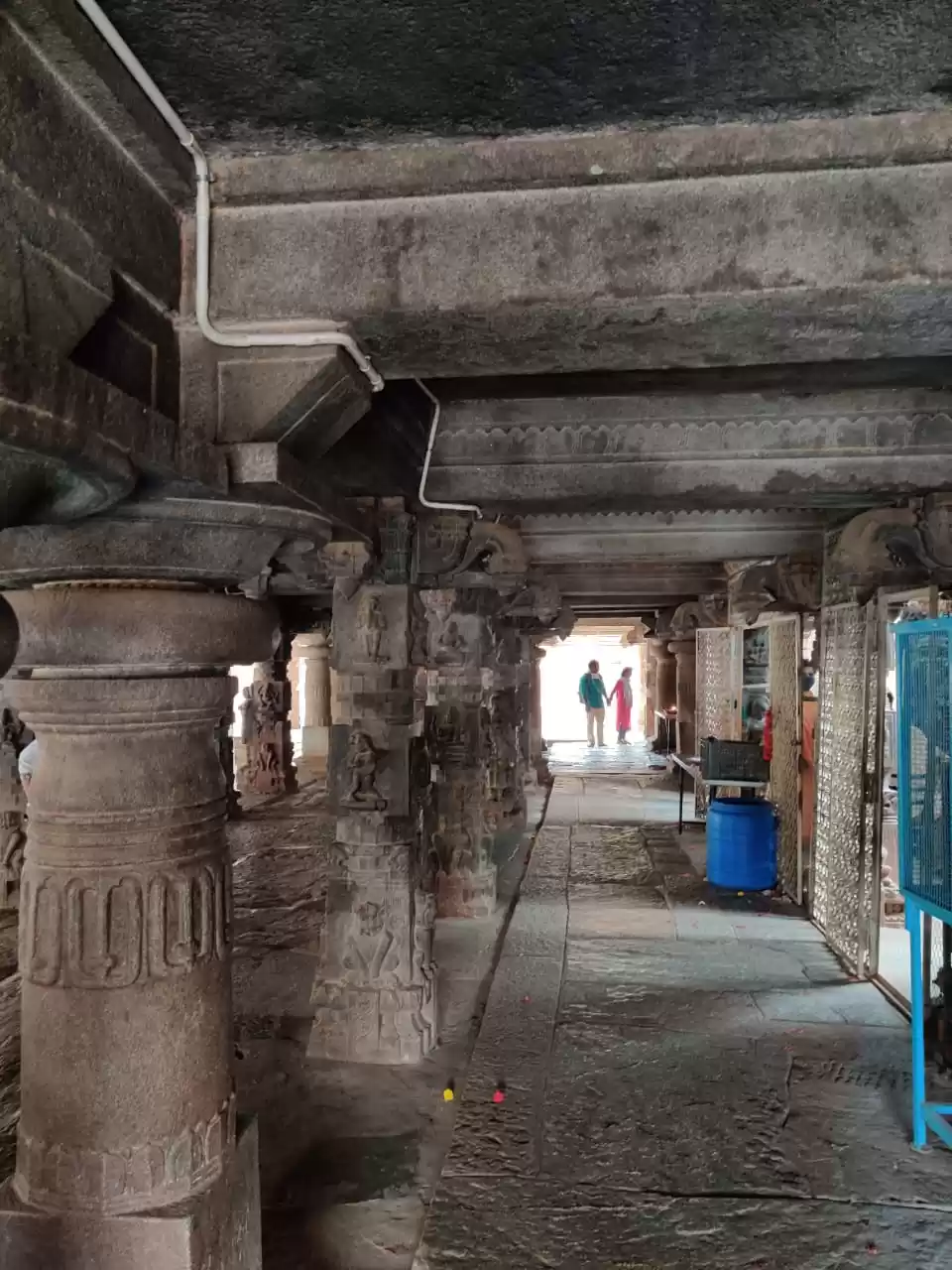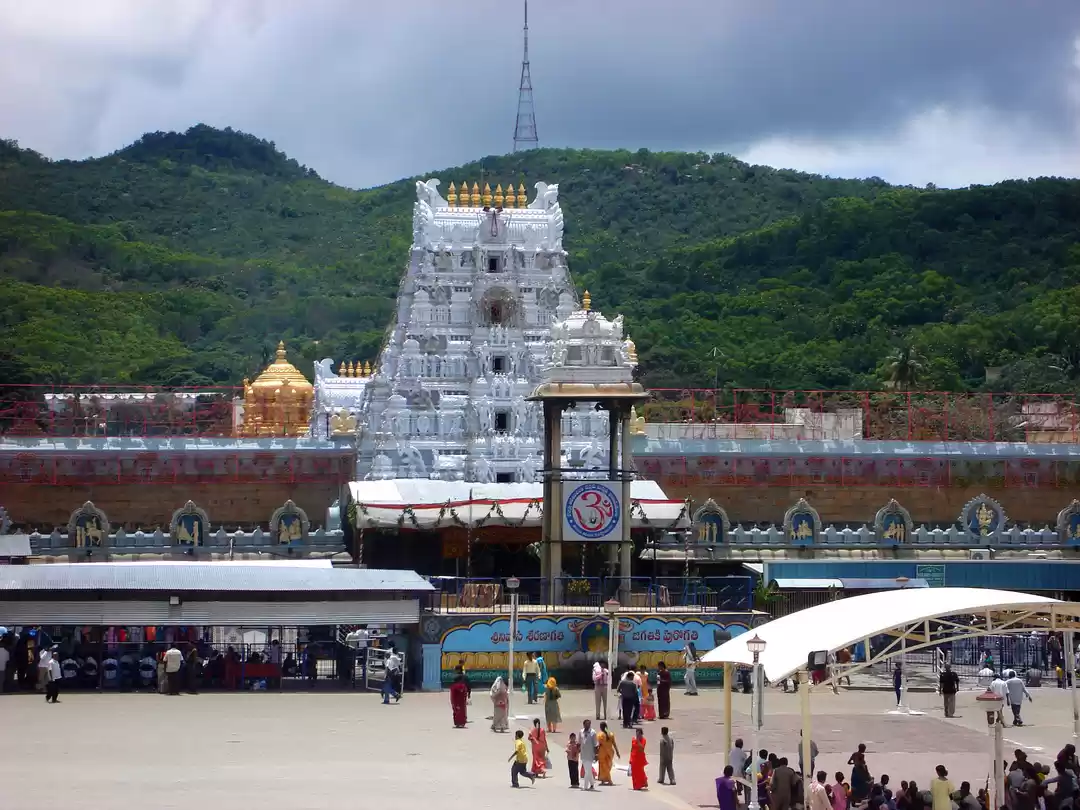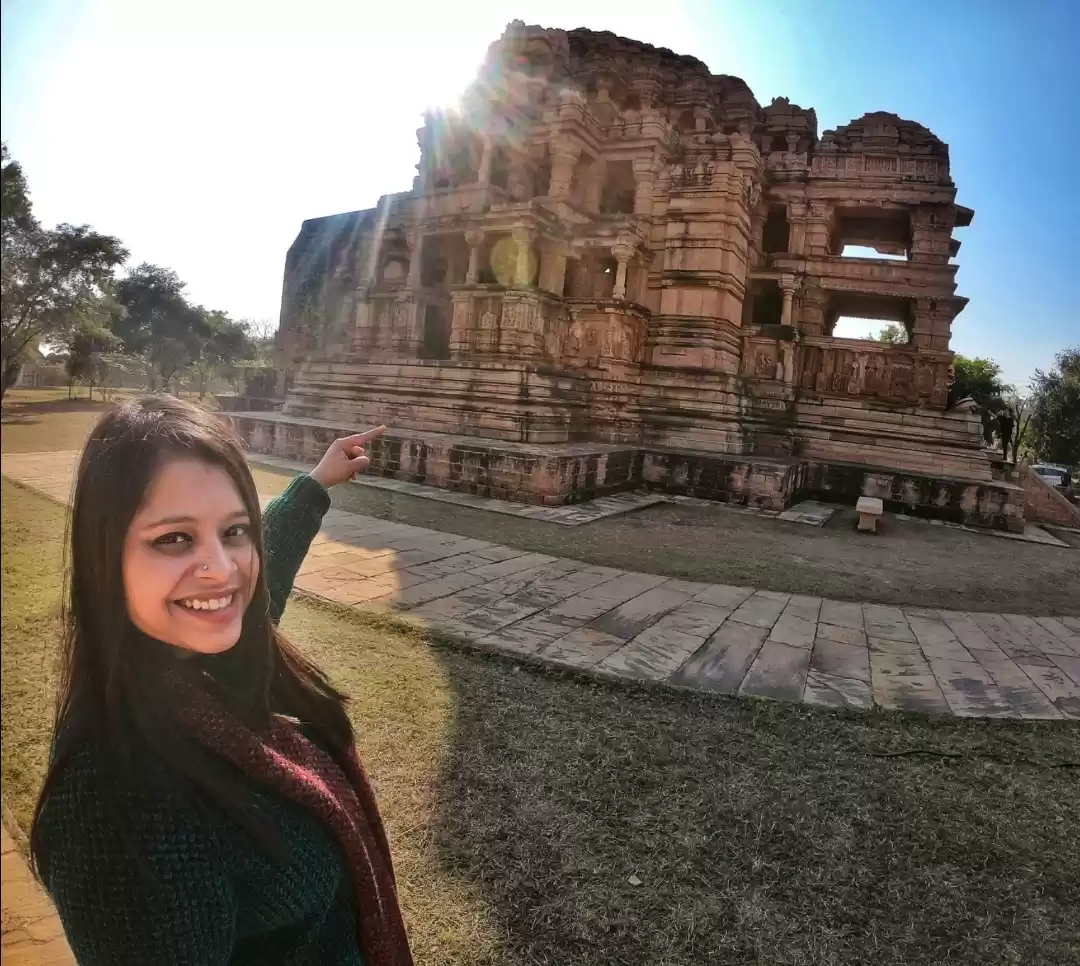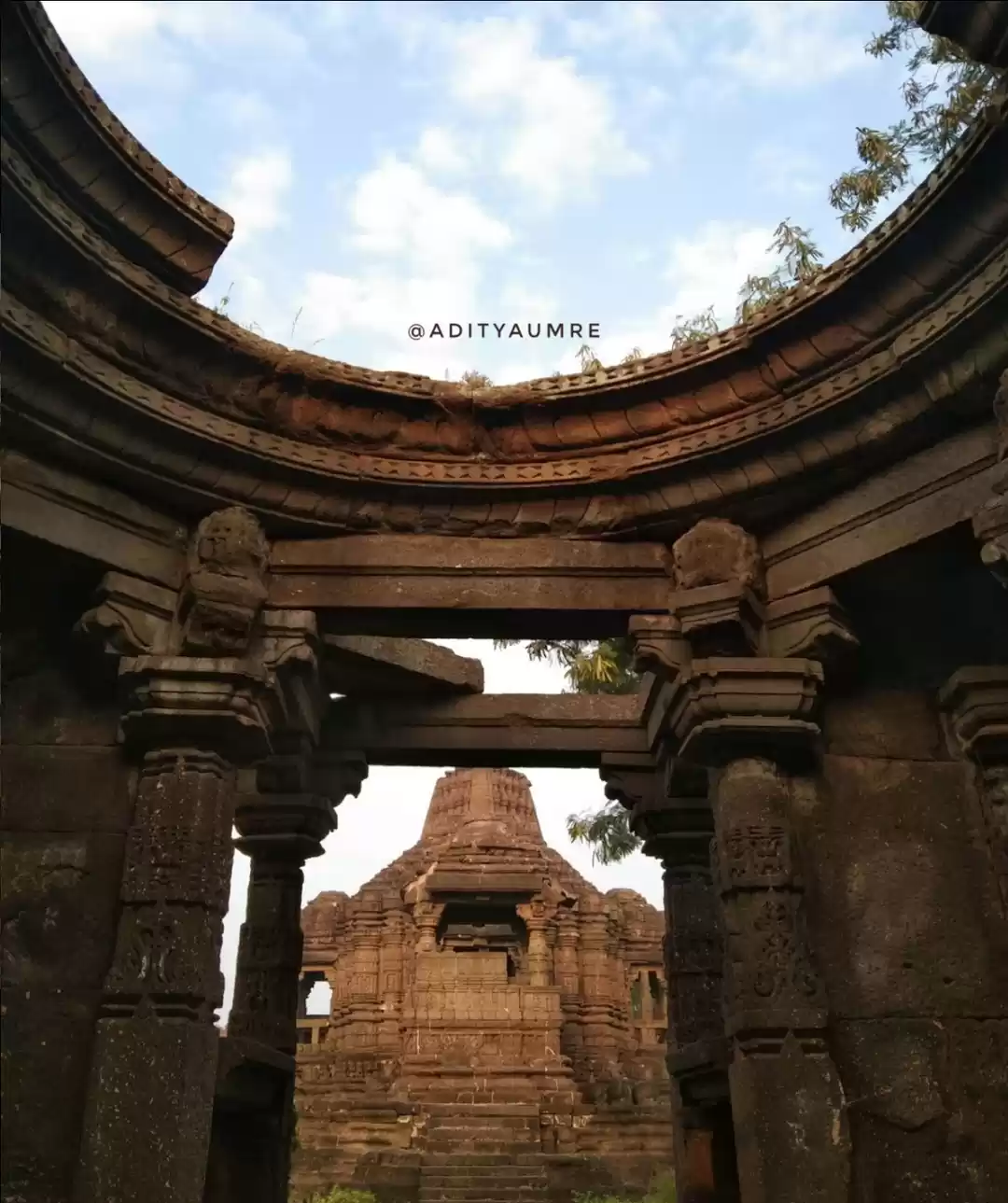You must visit the Brahadeshwara Temple, also known as the Brihadeeswarar Temple, the Periya Kovil, the RajaRajeswara Temple or the Rajarajesvaram. This temple is not only one of the largest and oldest temples in India, but also one of the most magnificent and majestic ones. It is a UNESCO World Heritage Site and a testimony to the Chola civilization, which was one of the most powerful and prosperous empires in Indian history.
In this article, we will take you on a virtual tour of the Brahadeshwara Temple, and explore its history, architecture and significance. We will also provide you with practical information on how to visit the temple, and what to expect when you get there. By the end of this article, you will be amazed by the beauty and glory of this temple, and you will want to make it your next destination.
History of Brahadeshwara Temple
The Brahadeshwara Temple was built by the Chola king Rajaraja I in the 11th century CE, in his capital city of Thanjavur, in Tamil Nadu. The Chola dynasty was one of the longest-ruling and most influential dynasties in South India, and it reached its zenith under Rajaraja I and his son Rajendra I. The Cholas were known for their military conquests, maritime trade, administrative reforms, cultural patronage and religious tolerance. They were devout followers of Shaivism, a sect of Hinduism that worships Shiva as the supreme deity.
The temple was built to honor Shiva and to display the Chola culture and power. It took about seven years to complete, and involved thousands of workers, artisans and elephants. The temple was constructed entirely of granite, which is a hard and heavy stone that is not easily available in the region. The temple is also known for its inscriptions, sculptures and frescoes, which record the donations, grants and endowments made by the Chola kings and nobles, and depict the stories, legends and festivals associated with the temple.
The temple has survived several natural disasters, such as earthquakes, floods and lightning strikes, and human vandalism, such as invasions, plunder and graffiti. It has also undergone several conservation and restoration efforts, by various agencies and organizations, such as the Archaeological Survey of India, the UNESCO, the Tamil Nadu government and the local community. The temple is still in use today, and attracts millions of visitors and devotees every year.
Architecture of Brahadeshwara Temple
The Brahadeshwara Temple is a masterpiece of Dravidian architecture, which is characterized by the use of pyramid-shaped towers, pillared halls, enclosed courtyards and sculpted walls. The temple complex covers an area of about 15 acres, and consists of several structures, such as the vimana, the kumbam, the nandi, the prakara and the gopura.
The vimana is the tower that rises above the sanctum sanctorum, which houses the main idol of Shiva. The vimana of the Brahadeshwara Temple is the tallest in India, measuring about 66 meters in height. It is also the most ornate and elaborate, with intricate carvings and paintings. The vimana also has a huge Shiva lingam, which is the symbol of Shiva, made of polished black granite. The Shiva lingam is about 4 meters in height and 6 meters in circumference, and is one of the largest in the world.
The kumbam is the spherical structure that crowns the vimana, and symbolizes the cosmic egg or the source of creation. The kumbam of the Brahadeshwara Temple is a marvel of engineering, as it is made of a single piece of granite, weighing about 80 tons. The kumbam was carved and shaped at a nearby quarry, and then transported and lifted to the top of the vimana, using a series of ramps and pulleys.
The nandi is the colossal statue of Nandi, the bull mount of Shiva, which faces the sanctum sanctorum. The nandi of the Brahadeshwara Temple is the second largest in India, measuring about 6 meters in length and 3.7 meters in height. It is also made of a single piece of granite, weighing about 25 tons. The nandi is placed on a raised platform, which has a mandapa, which is a pillared hall, around it.
The prakara is the rectangular enclosure that surrounds the temple complex, and contains several shrines, halls and tanks. The prakara of the Brahadeshwara Temple has three concentric walls, each with an entrance gate. The innermost wall has the main shrine of Shiva, and the shrines of his consort Parvati, his son Ganesha, and his vehicle Nandi. The middle wall has the shrines of Subrahmanya, Chandikeswara, Varahi, Karuvur Devar and Nataraja. The outermost wall has the shrines of Dakshinamurthy, Lingodbhavar, Brahma, Durga, Chandrasekhara and Bhikshatana. The prakara also has several mandapas, such as the Nandi Mandapa, the Mukhamandapa, the Mahamandapa and the Ardhamandapa, which are used for various rituals and ceremonies.
The gopura is the gateway that marks the entrance to the prakara, and is decorated with sculptures and paintings. The gopura of the Brahadeshwara Temple has two storeys, and is smaller than the vimana. The gopura has a pyramidal roof, which has a series of horizontal tiers, each with a row of miniature towers. The gopura also has a kalasha on top of it. The gopura has four sides, each with a large opening, which has a wooden door. The gopura has several niches, each containing a statue of a deity, an animal or a mythical creature. The gopura also has several panels, each depicting a scene from the Hindu mythology or the Chola history.
Significance of Brahadeshwara Temple
The Brahadeshwara Temple is not only a stunning example of architecture and art, but also a profound expression of religion and spirituality, culture and history. The temple has a deep and lasting impact on the people who visit it, and on the society and civilization that built it.
The religious significance of the temple lies in its dedication to Shiva and its representation of the Saiva Siddhanta philosophy, which is the dominant form of Shaivism in Tamil Nadu. The temple portrays Shiva as the supreme lord, the creator, preserver and destroyer of the universe, and the source of all knowledge, power and bliss.
The spiritual significance of the temple lies in its role as a place of worship, meditation and pilgrimage, where devotees can experience the divine presence and grace of Shiva. The temple is a living and vibrant temple, where daily rituals and ceremonies are performed, such as the abhisheka, which is the bathing of the idol, the alankara, which is the dressing of the idol, the aarti, which is the waving of the lamps, and the prasada, which is the distribution of the food. The temple is also a place of meditation, where devotees can sit in silence and contemplate on the teachings and attributes of Shiva.
The timing of the temple is:
The temple is open from 6:00 am to 9:00 pm every day, with a break from 12:30 pm to 4:00 pm.
The best time to visit the temple is in the morning or evening, when the weather is pleasant and the crowd is less.
The best season to visit the temple is from October to March, when the climate is cool and dry, and the festivals are celebrated.
The entry fee of the temple is:
The temple does not charge any entry fee for visitors, but there is a nominal fee for camera and video recording.
The temple also offers concessions and exemptions for different categories of visitors, such as children, students, senior citizens and foreigners.
The nearby attractions of the temple are:
The Thanjavur Palace, which is a complex of buildings that was the residence and the administrative center of the Nayakas and the Marathas, who ruled Thanjavur after the Cholas.
The Saraswathi Mahal Library, which is one of the oldest and largest libraries in Asia, and has a collection of over 60,000 manuscripts and books in various languages and scripts, such as Tamil, Sanskrit, Telugu, Marathi, Hindi, Urdu, Arabic, Persian and English.
The Thanjavur Art Gallery, which is a museum that displays the sculptures, paintings, metalwork and jewellery of the Chola, the Nayaka and the Maratha periods.
The Sivaganga Park, which is a public park that has a garden, a zoo, a toy train, a boating lake and a children’s play area. The park also has a statue of Rajaraja I, the founder of the Brahadeshwara Temple.
The Brahadeshwara Temple is a marvel of Chola architecture and art, and a symbol of the Chola civilization and culture. It is a UNESCO World Heritage Site and one of the most magnificent and majestic temples in India. It is a place of history, religion, spirituality and beauty, where you can witness the glory and grace of Shiva, and the power and prosperity of the Cholas.
We hope that this article has given you a glimpse of the Brahadeshwara Temple, and has inspired you to visit it and experience it for yourself.

